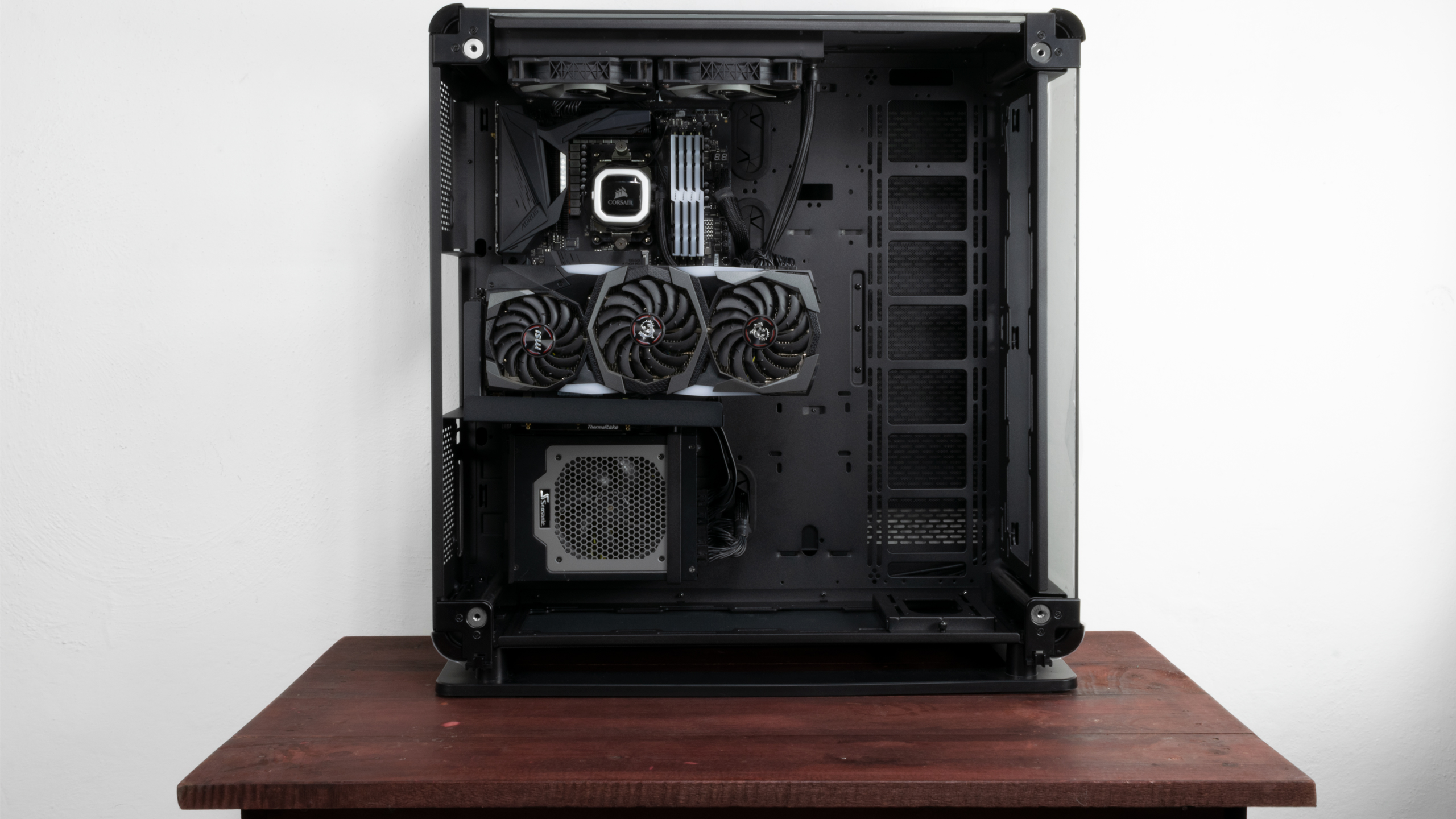Ryzen 5000 RAM Guide: Find The Best RAM For Your Zen 3 CPU
When it comes to processors, even the best can be made better through a little tuning, and that statement certainly holds true with AMD's market-leading Ryzen 5000 processors. These chips often don't overclock to bleeding-edge core frequencies, instead relying on automatic algorithms to extract the best core performance. However, tuning your memory can significantly improve performance. In fact, often just selecting the right kit with the correct number of DIMMs can provide tangible performance gains with a minimum of fuss. This article covers the best RAM settings and combinations for Ryzen 5000 processors, including overclocked configurations, along with a few tips on what you should expect from your chip.
It's not always easy to stay on the right path, and AMD, like any other company, has had its ups and downs. After being off track for a few years, the chipmaker ultimately found the winning formula with its Zen microarchitecture. Four years later, AMD's foot is still on the pedal and taking the fight to Intel, with its latest army of Ryzen 5000 (codename Vermeer) processors leading the charge.
Ryzen 5000 wields AMD's latest Zen 3 cores that introduced important IPC gains, among other microarchitectural improvements. On the memory front, Ryzen 5000 chips inherited the same I/O die and dual-channel memory controller as their predecessors, therefore, the mechanics remain unchanged. That's an important consideration when selecting and tuning Ryzen's memory.
The Infinity Fabric Clock (FCLK) continues to be in a permanent relationship with the unified memory controller clock (UCLK) and memory clock (MEMCLK) in a 1:1:1 ratio. As usual, the trio needs to be on the same page for optimal operation, while breaking that synchronicity results in a heavy latency penalty that's detrimental to performance in some applications.
DDR4-3200 is still the officially supported memory frequency on Ryzen 5000. Looking back, Ryzen 3000's FCLK typically hits a wall at 1,800 MHz, which means you can run the memory at DDR4-3600 and remain in 1:1:1 mode. There have been rare exceptions where some really extraordinary Ryzen 3000 samples could run stably with a 1,900 MHz FCLK (DDR4-3800).
However, Ryzen 5000's FCLK is a lot more forgiving, paving the way for a 2,000 MHz FCLK (DDR4-4000). AMD doesn't guarantee that every single Ryzen 5000 processor will achieve the feat, but the majority will. Let's see how that impacts performance.
Ryzen 5000 Test System and Setup
We evaluated nine different memory frequencies in total, spanning from JEDEC's baseline of DDR4-2133 all the way up to DDR4-4000. We configured the memory manually by inputting the different parameters. Our tests included four different memory configurations, with 16GB (2x8GB), 32GB (4x8GB), 32GB (2x16GB), and 64GB (4x16GB) setups to assess the impact of memory ranks and capacity on AMD's Ryzen 5000 processors.
During the entirety of our tests, we kept the Ryzen 9 5900X's FCLK in sync with the memory frequency that we tested. As with most Ryzen 5000 processors, the FCLK ceiling for our sample was 2,000 MHz (DDR4-4000). To ensure consistency among the tests, we ran our RAM benchmarks three times and used the median value as the final result.
Get Tom's Hardware's best news and in-depth reviews, straight to your inbox.
| Test System | Header Cell - Column 1 |
|---|---|
| Processor | AMD Ryzen 9 5900X |
| Motherboard | Gigabyte B550 Aorus Master |
| Memory | G.Skill Ripjaws V DDR4-4000 C15 2x8GB; Trident Z Neo DDR4-3600 C14 2x8GB, 2x16GB |
| Storage | Crucial MX500 500GB, 2TB |
| CPU Cooler | Corsair Hydro H115i Pro |
| Graphics Card | MSI GeForce RTX 2080 Ti Gaming X Trio |
| Power Supply | Seasonic Platinum SS-1200XP3 1200W |
| Case | Thermaltake Core P8 |
| Operating System | Windows 10 Professional 64-bit with October 2020 Update |
| Display Driver | Nvidia GeForce Game Ready 461.40 WHQL |
We updated the firmware for our Gigabyte B550 Aorus Master to the latest publicly-available revision. On the software front, we used a fresh 64-bit installation of Windows 10 Professional with all available updates. Furthermore, we updated our test system's drivers, benchmarking programs, and game clients to the latest versions at the time of testing.
To Gear Or Not To Geardown?
Geardown Mode (GDM) is enabled on AMD motherboards whenever the memory runs above the DDR4-2666 standard. If your memory kit has an odd CAS Latency (CL) value, Geardown Mode basically rounds it up to the nearest even number and sets the command rate (CR) to 1T.
Our G.Skill Ripjaws V DDR4-4000 C15 2x8GB (F4-4000C15D-16GVK) memory kit has primary timings of 15-16-16-36. When the option is enabled, Geardown Mode configures the timings to 16-16-16-36 timings at 1T. Disabling the option restores the timings to default at 2T.
To explore the different variables in play, we tested a third configuration with the memory kit running at the default timings, but at 1T.
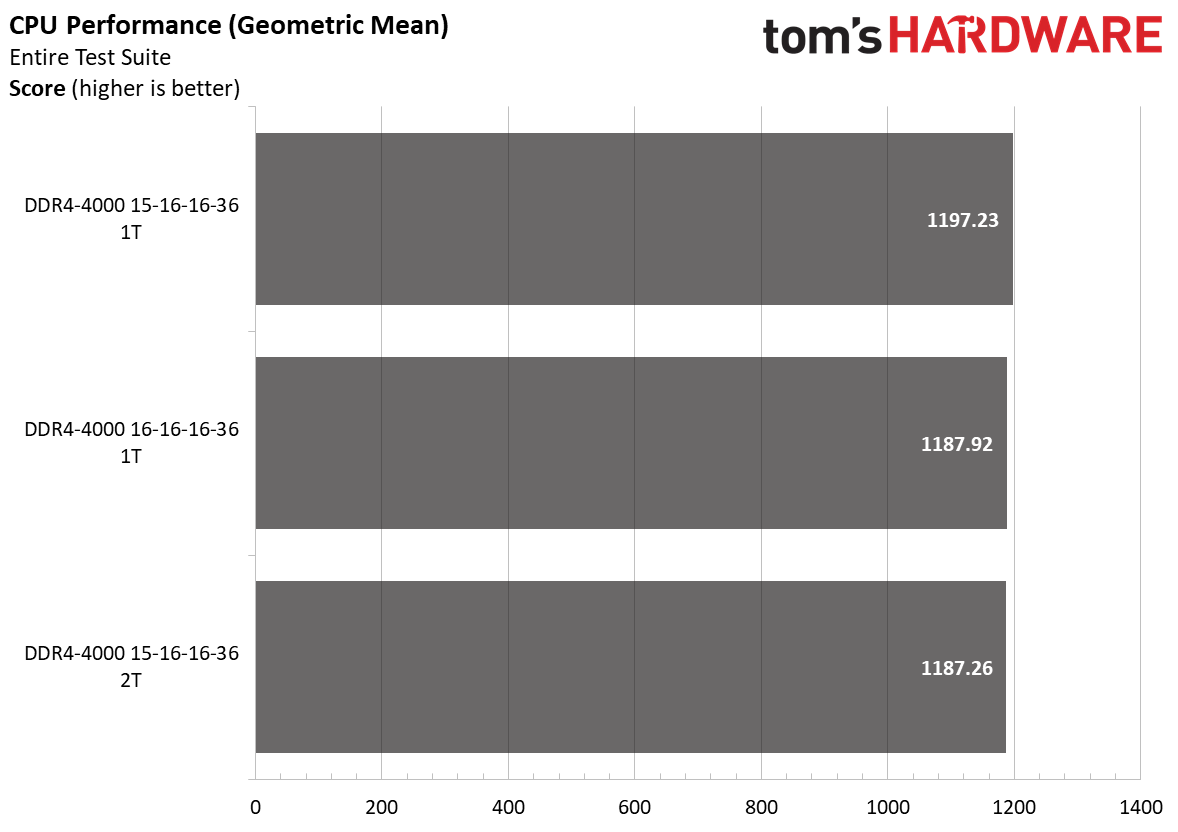

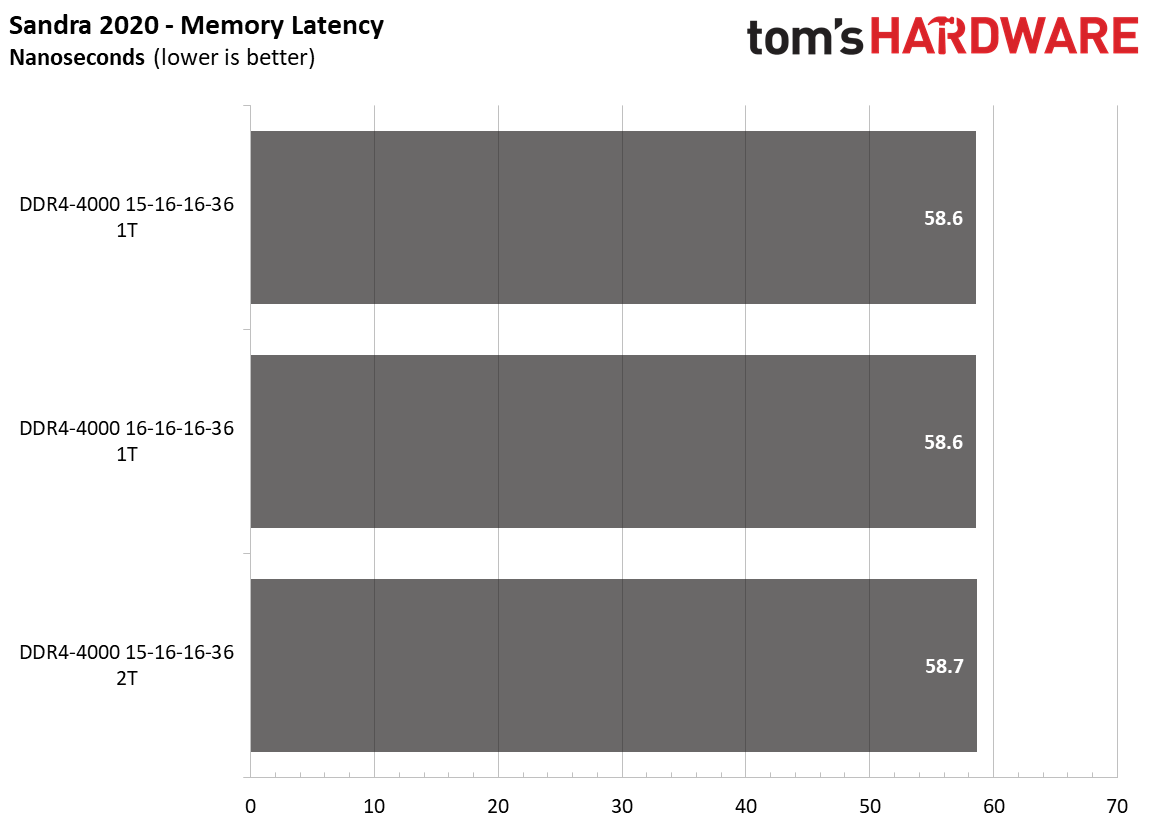
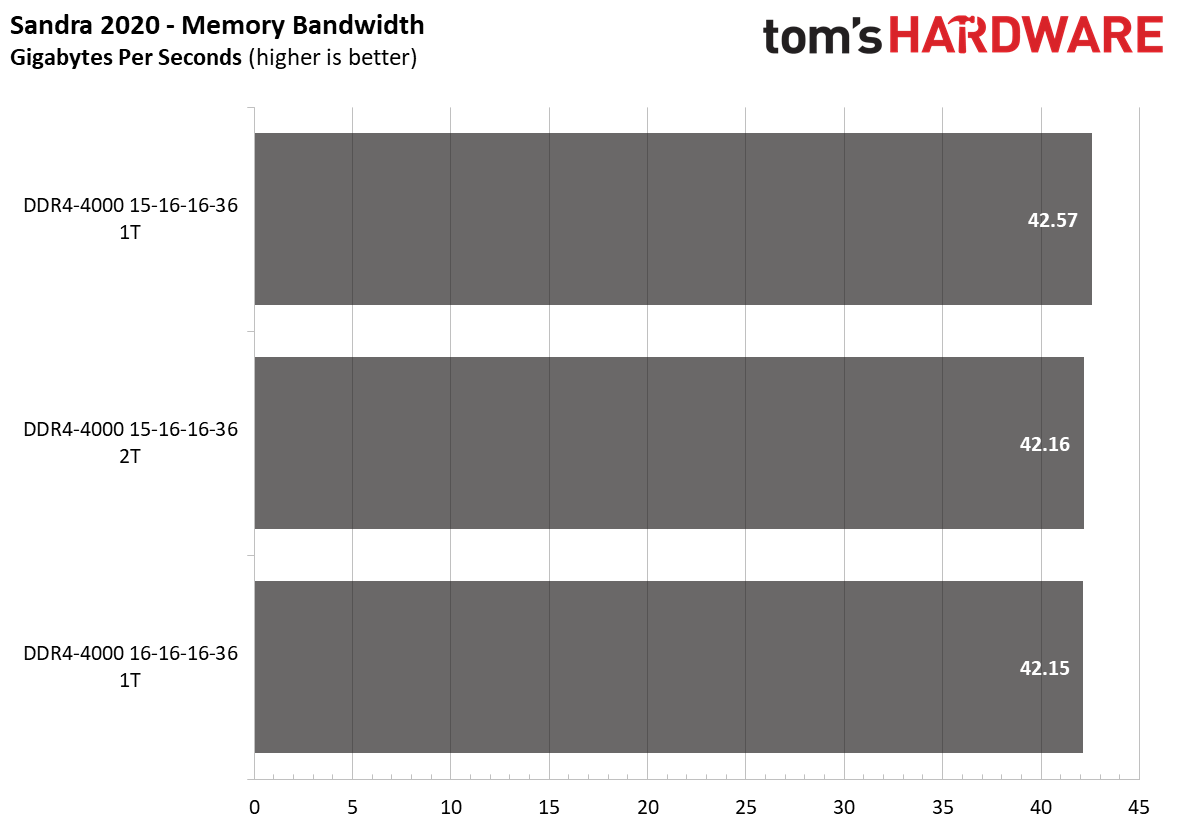
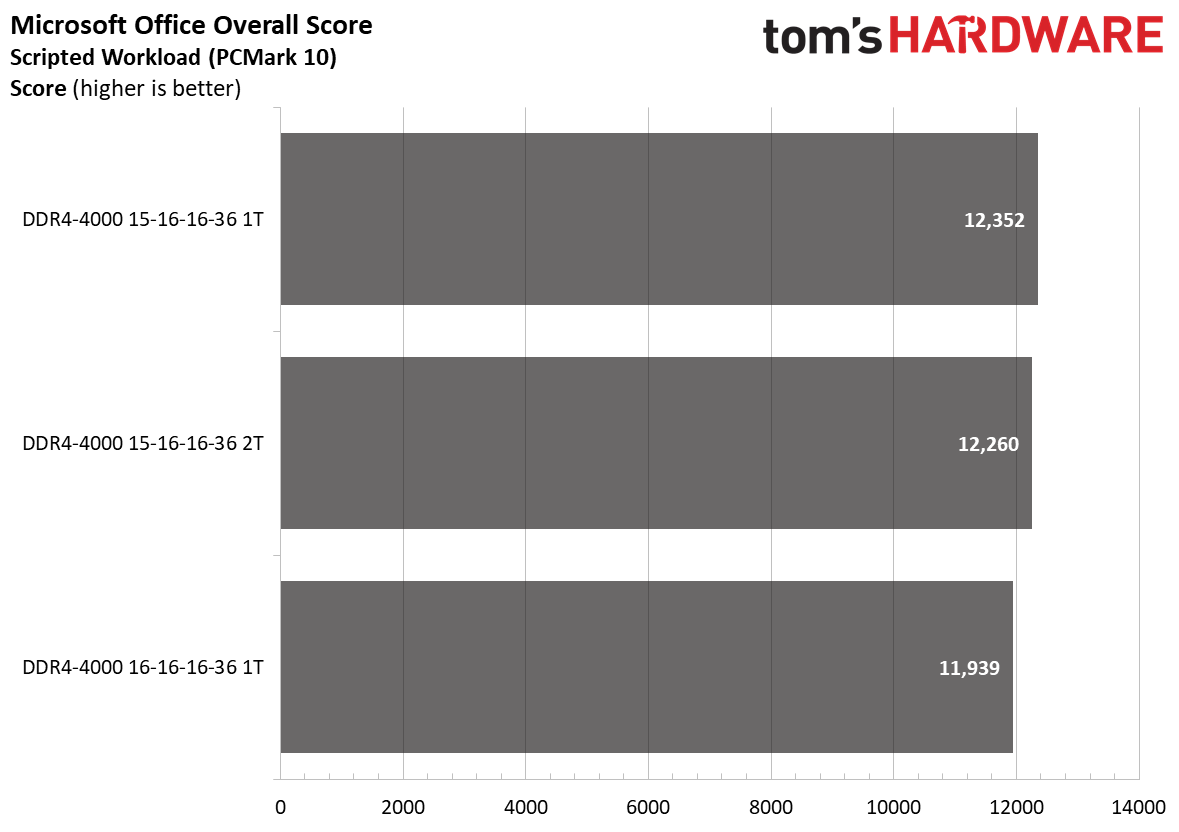
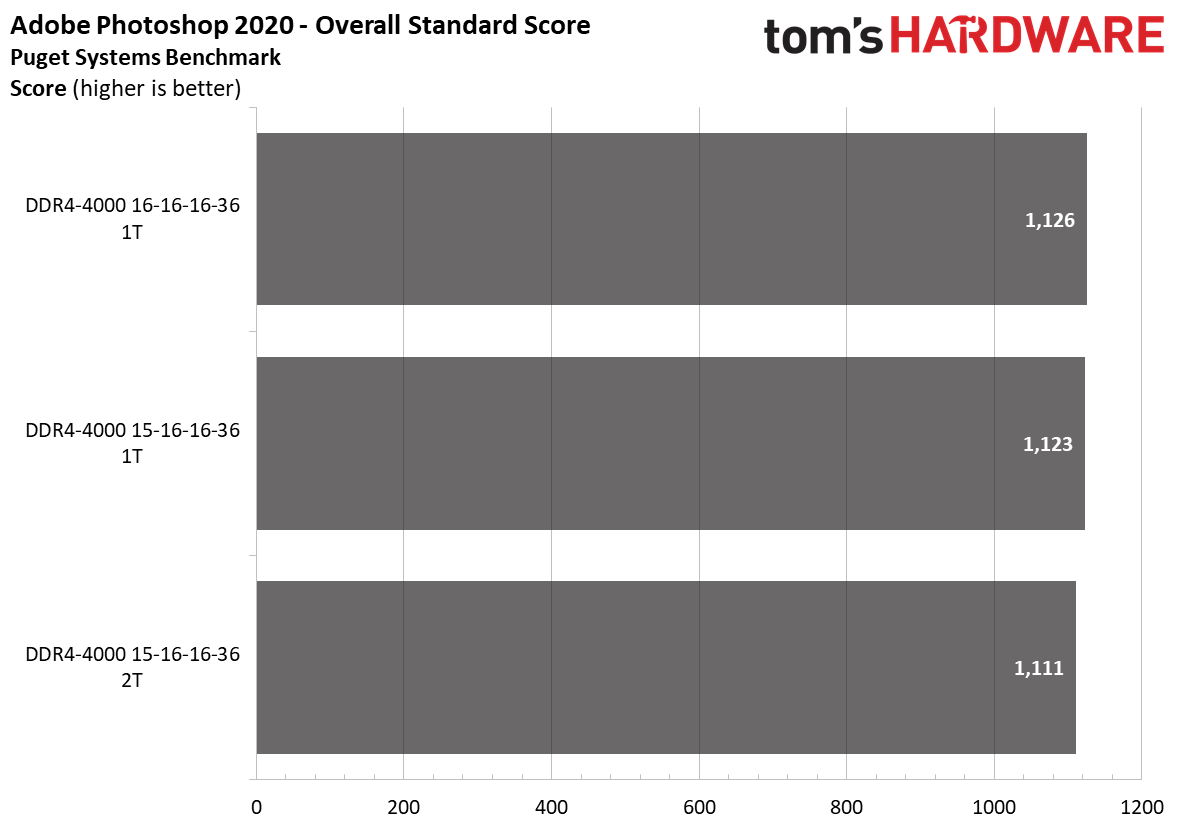



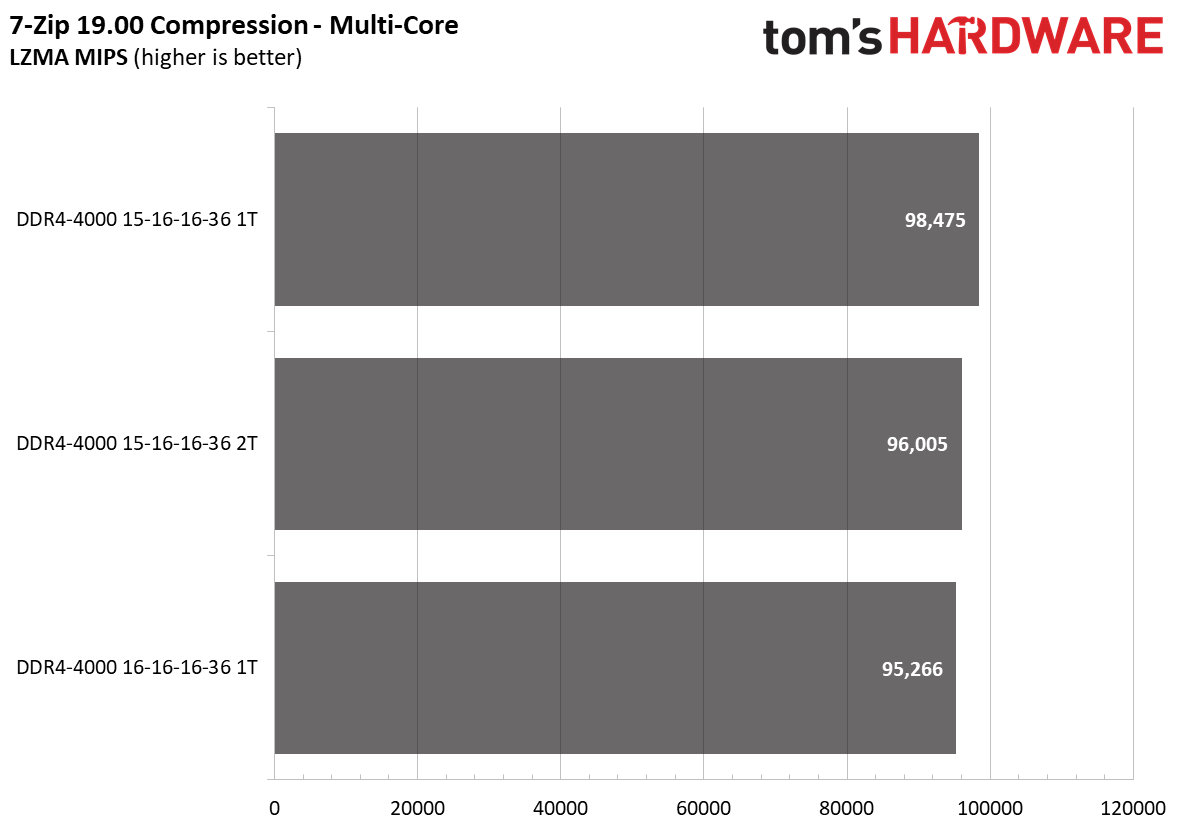
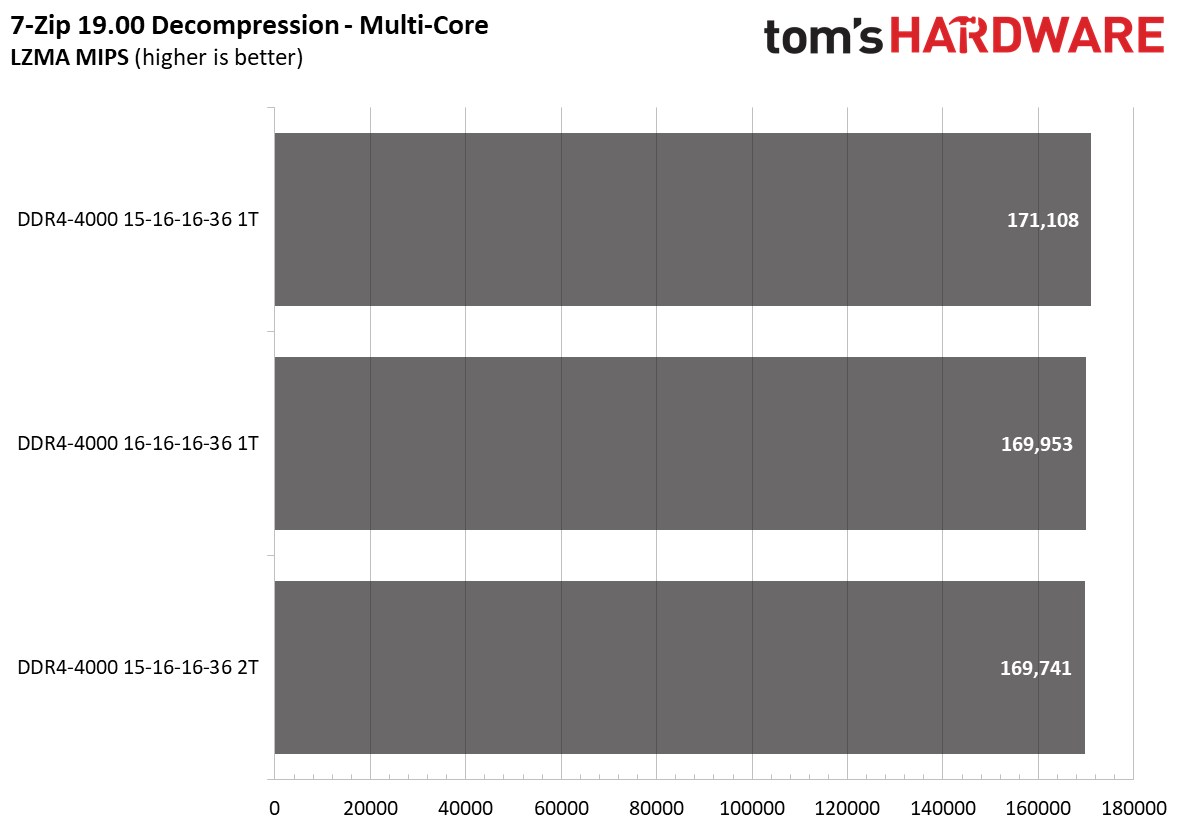
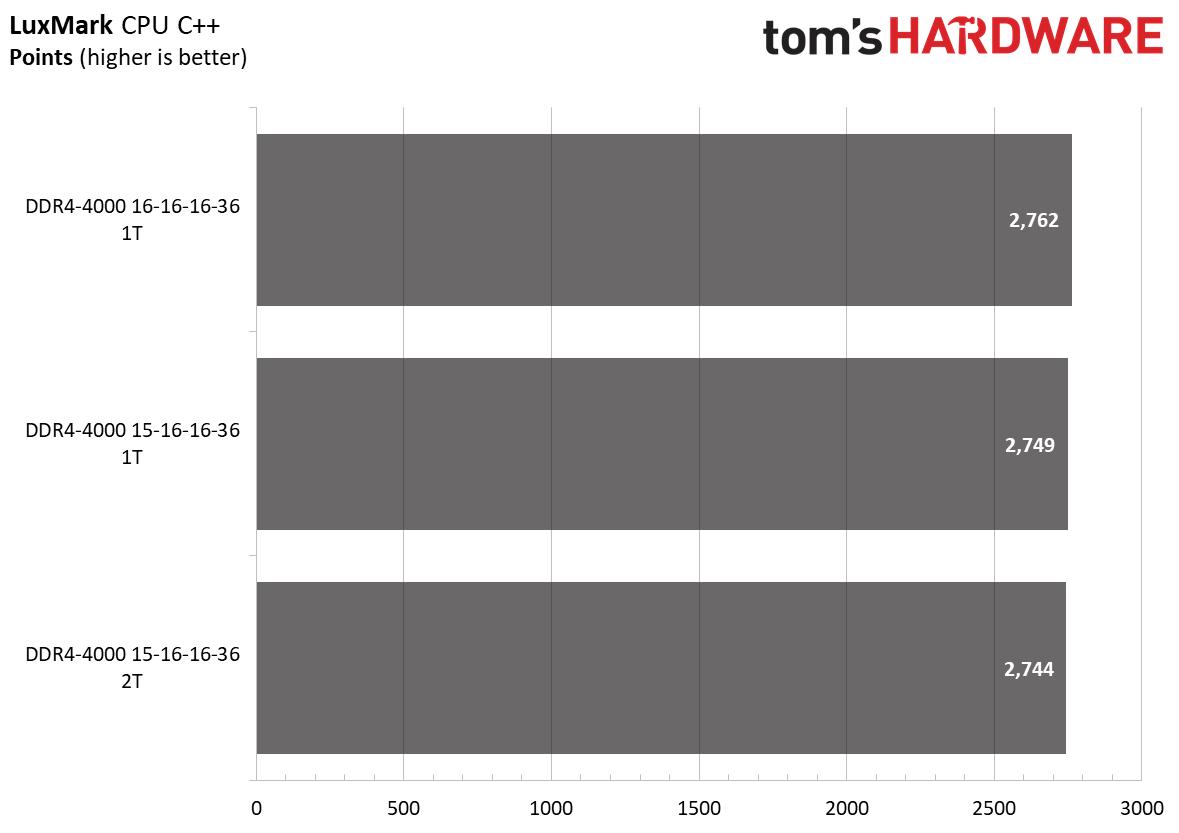
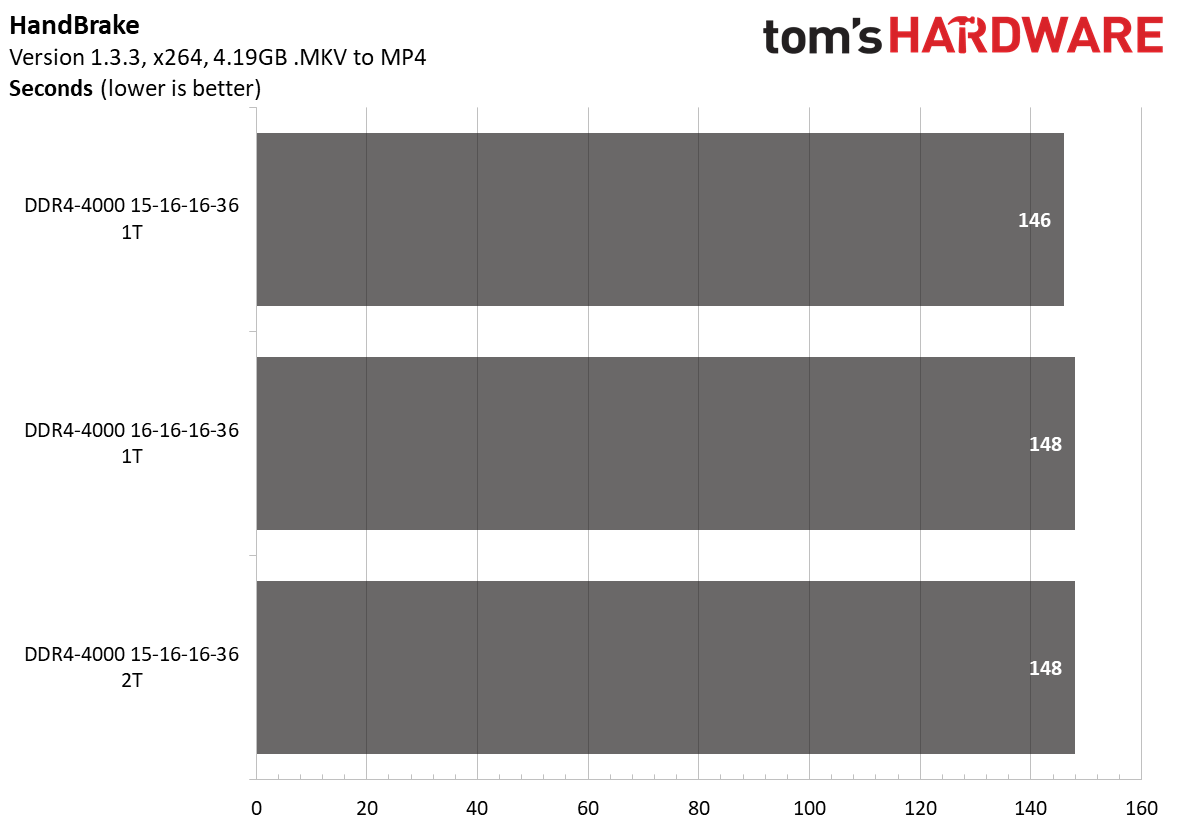
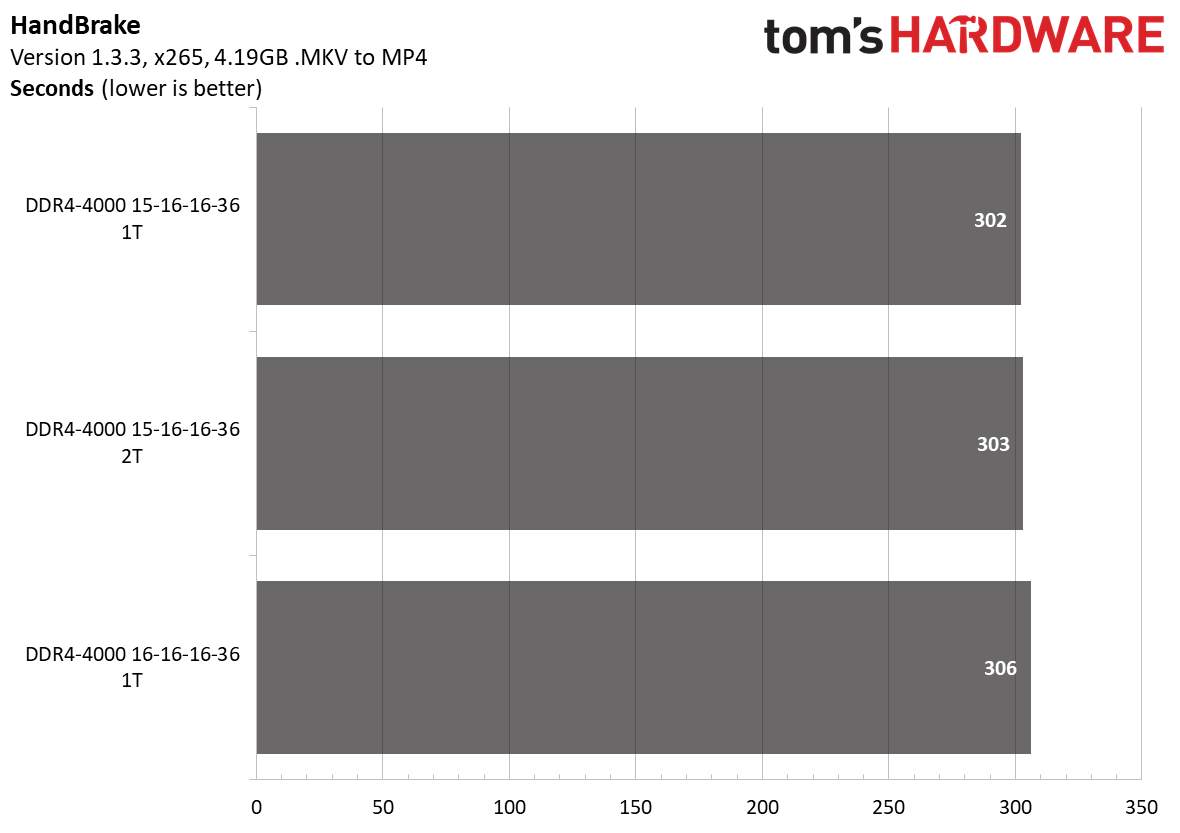
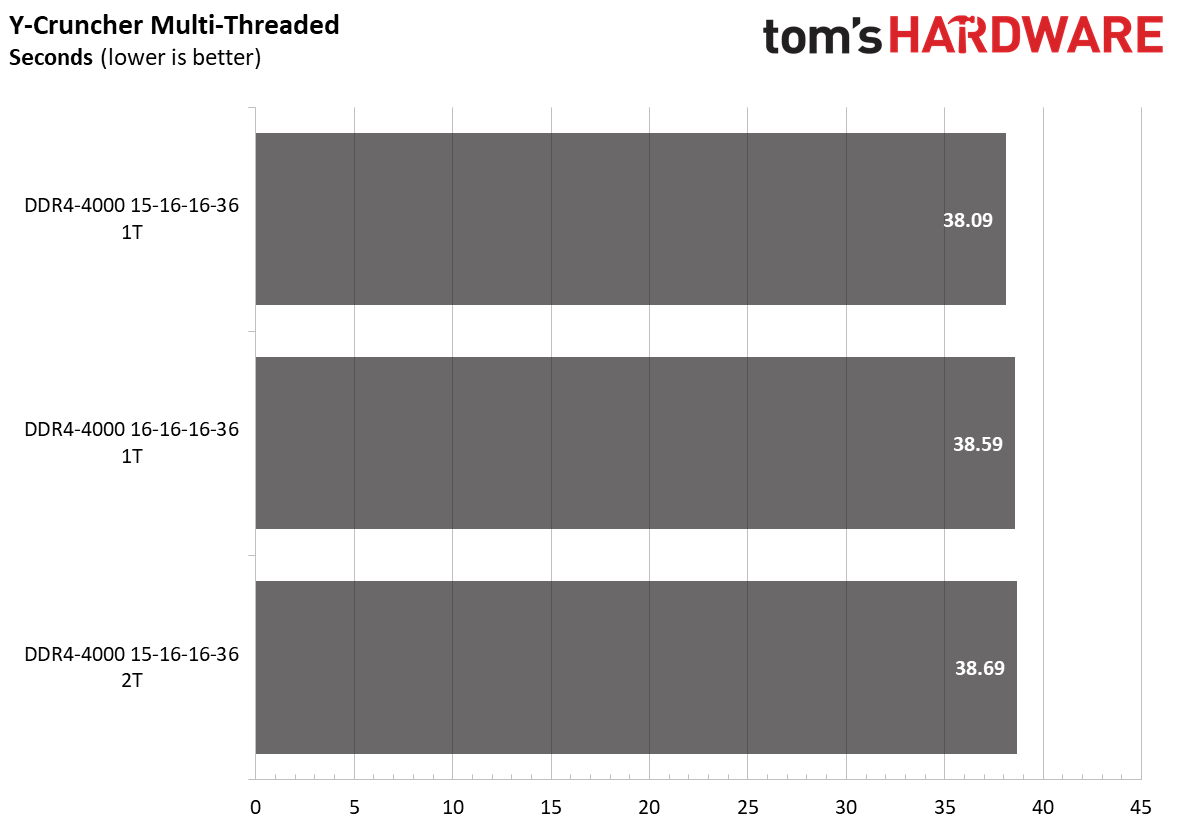
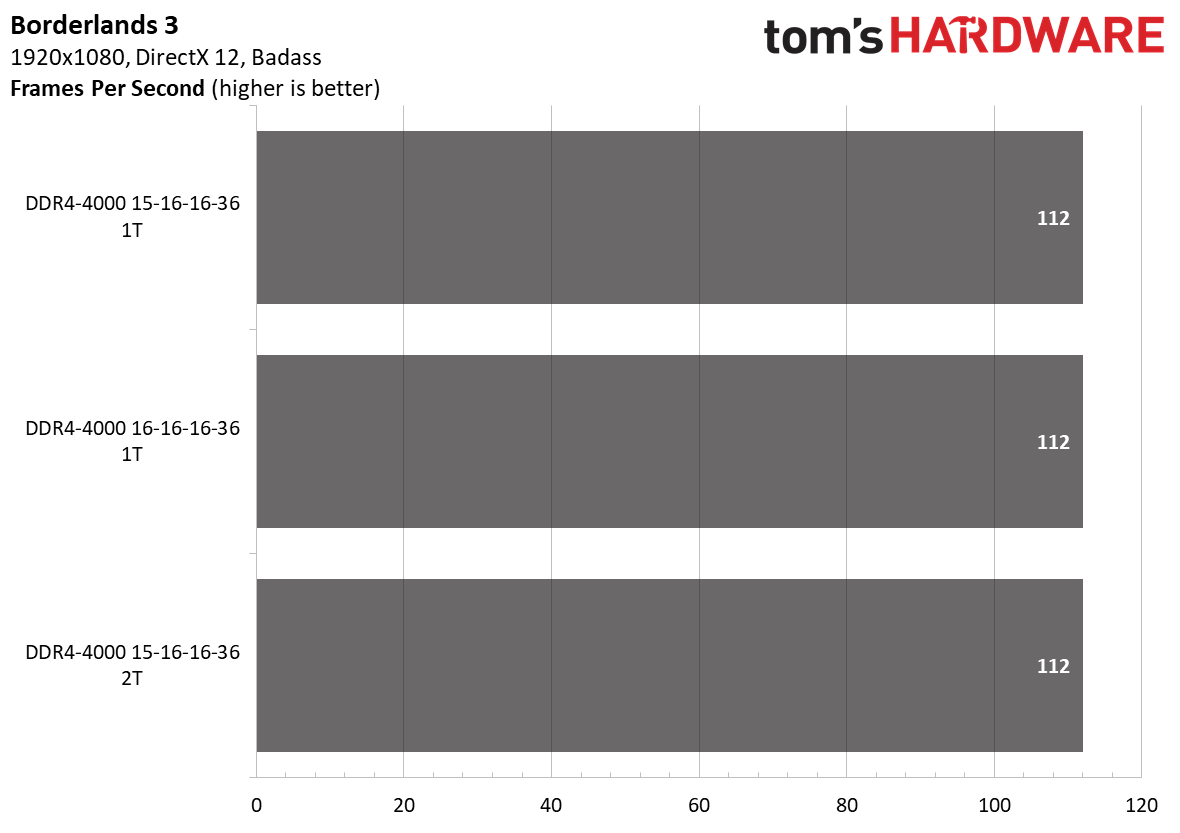
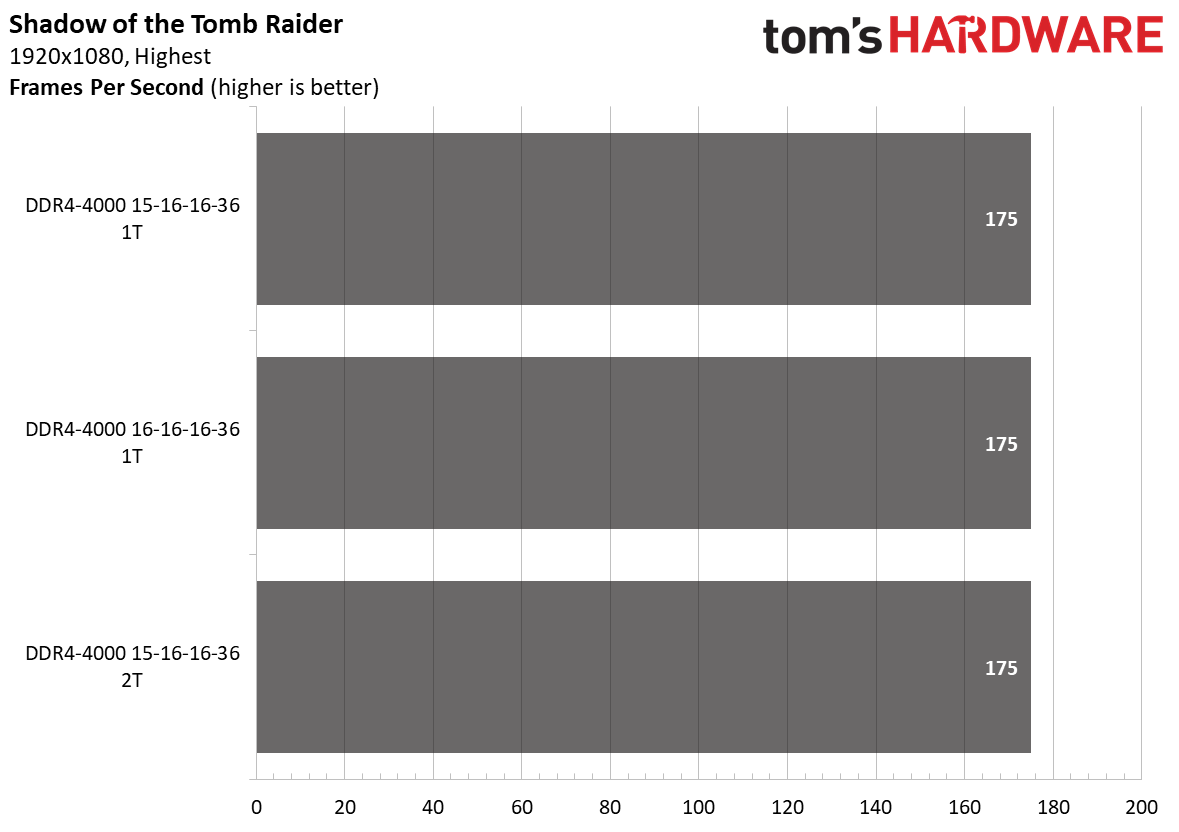

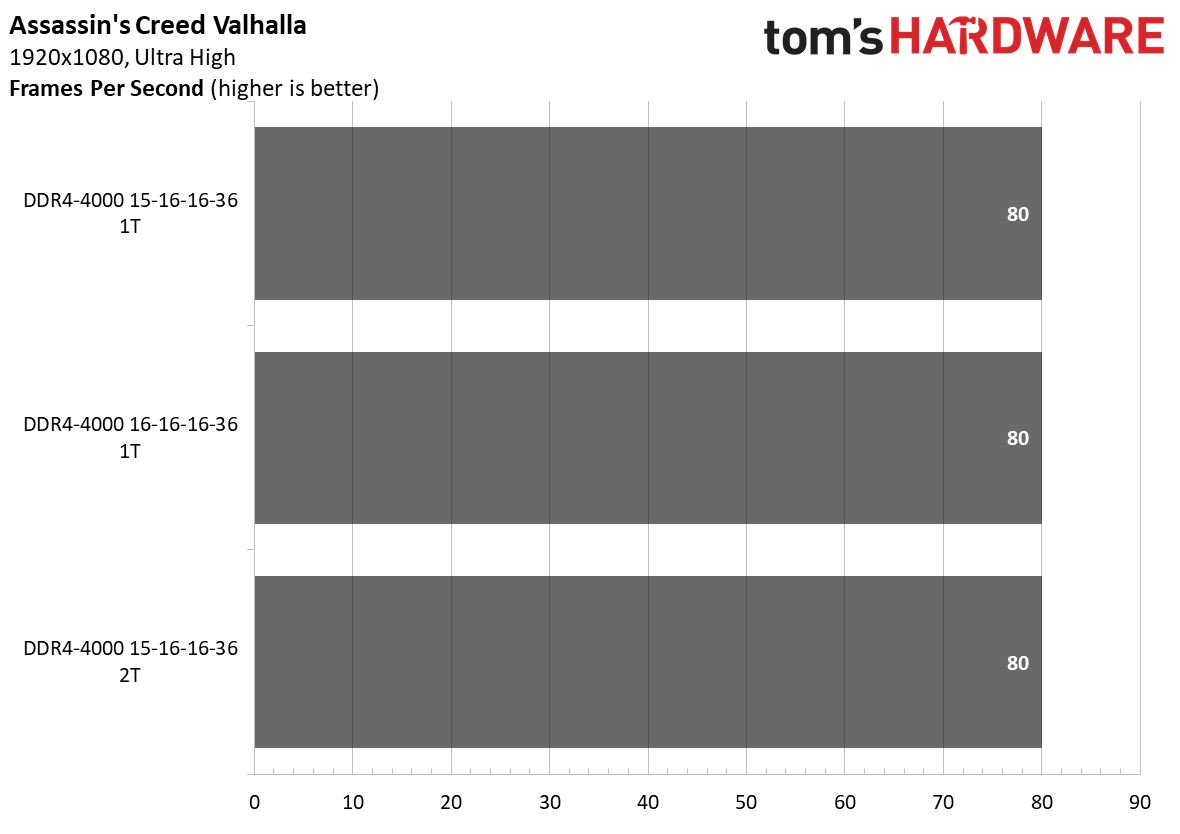
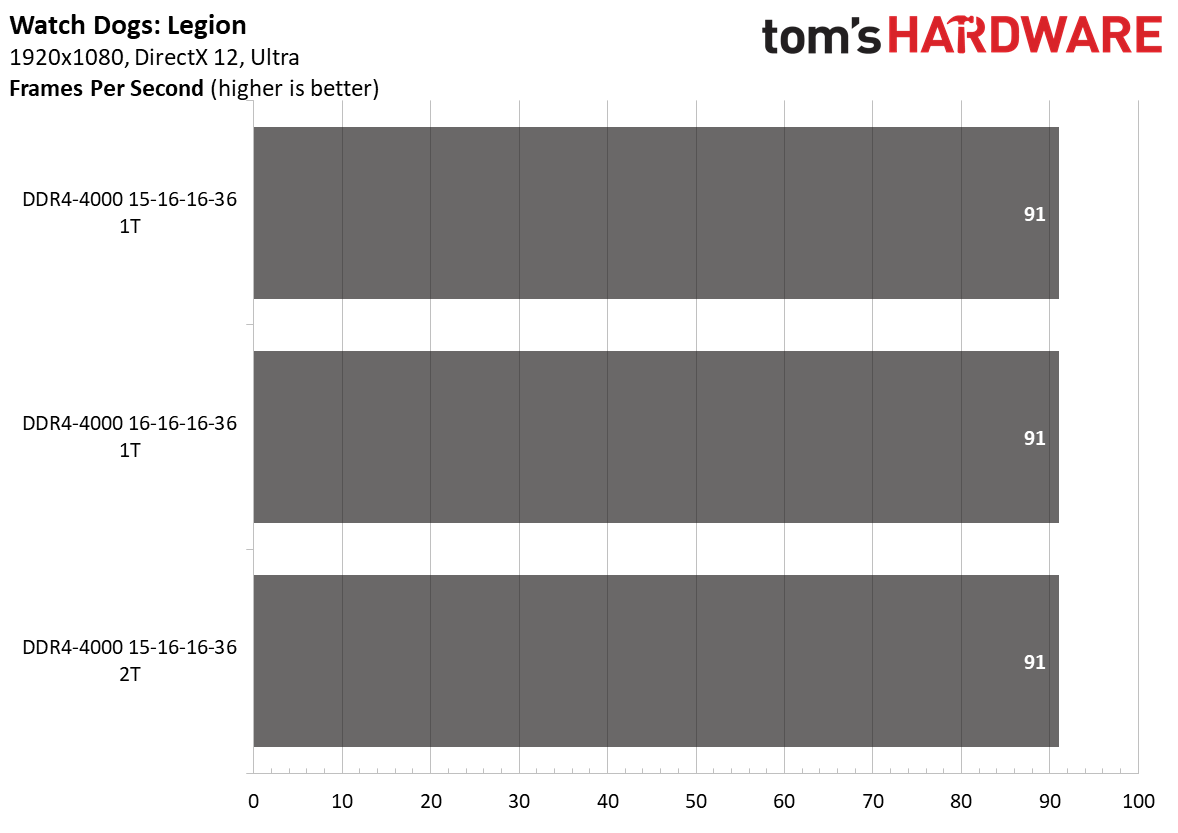
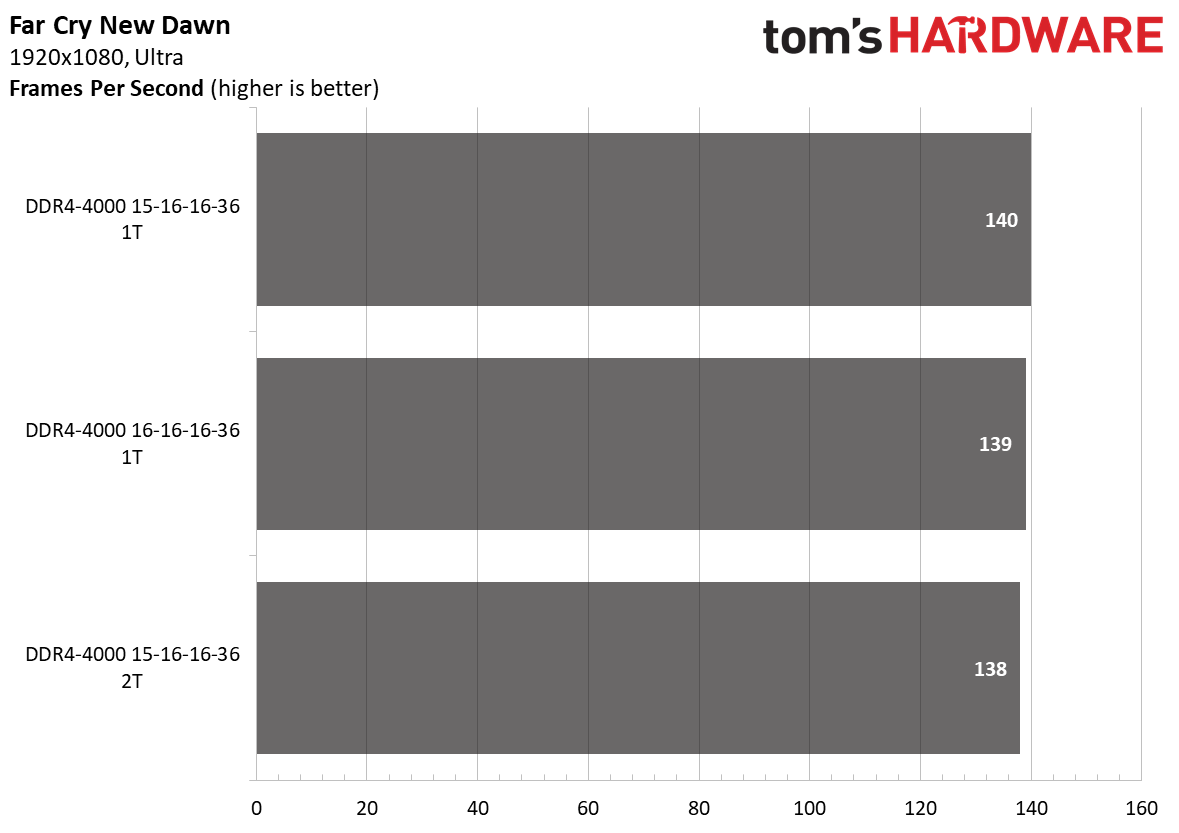
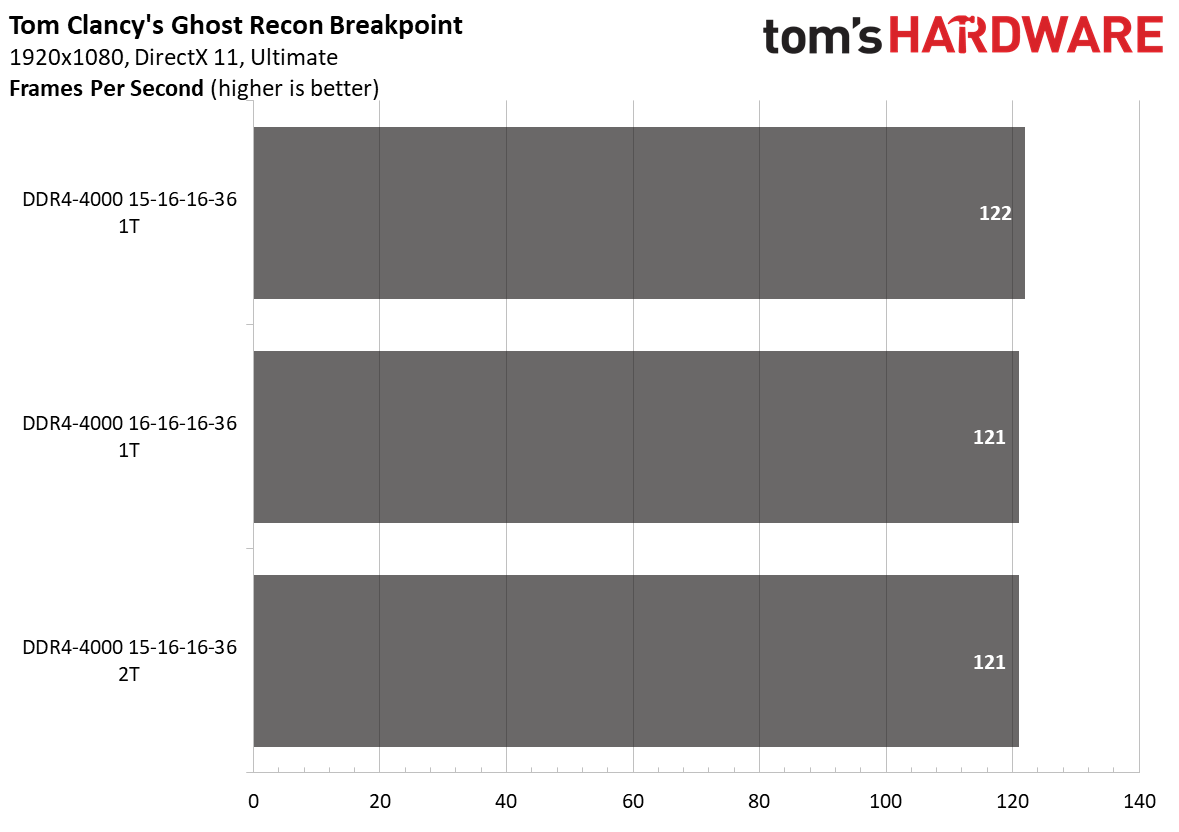
Geardown Mode came back with mixed results in our testing. Overall, the option had little impact on performance, with the difference amounting to less than a 1% delta. However, average results don't tell the whole story. We discovered certain scenarios where enabling or disabling Geardown Mode yielded a small performance gain.
For example, in the Microsoft Office benchmark, disabling Geardown Mode boosted performance by up to 2.7%. Manually tweaking the memory increased the margin to 3.5%. We saw the opposite happen in Premiere and Photoshop, where Geardown mode increased performance by up to 2.4% and 1.4%, respectively.
We can conclude that there is no simple answer to whether you should enable or disable Geardown Mode. At the end of the day, your choice really depends on the type of workloads you put your Zen 3 processor through. Since we can't test every single scenario, you'll have to do some exploring yourself.
Don't expect every memory kit to run at 1T, either. The high-performance memory kits are more likely to do 1T at the advertised frequency and timings. Some may require more manual tuning time than others, of course.
Memory Scaling


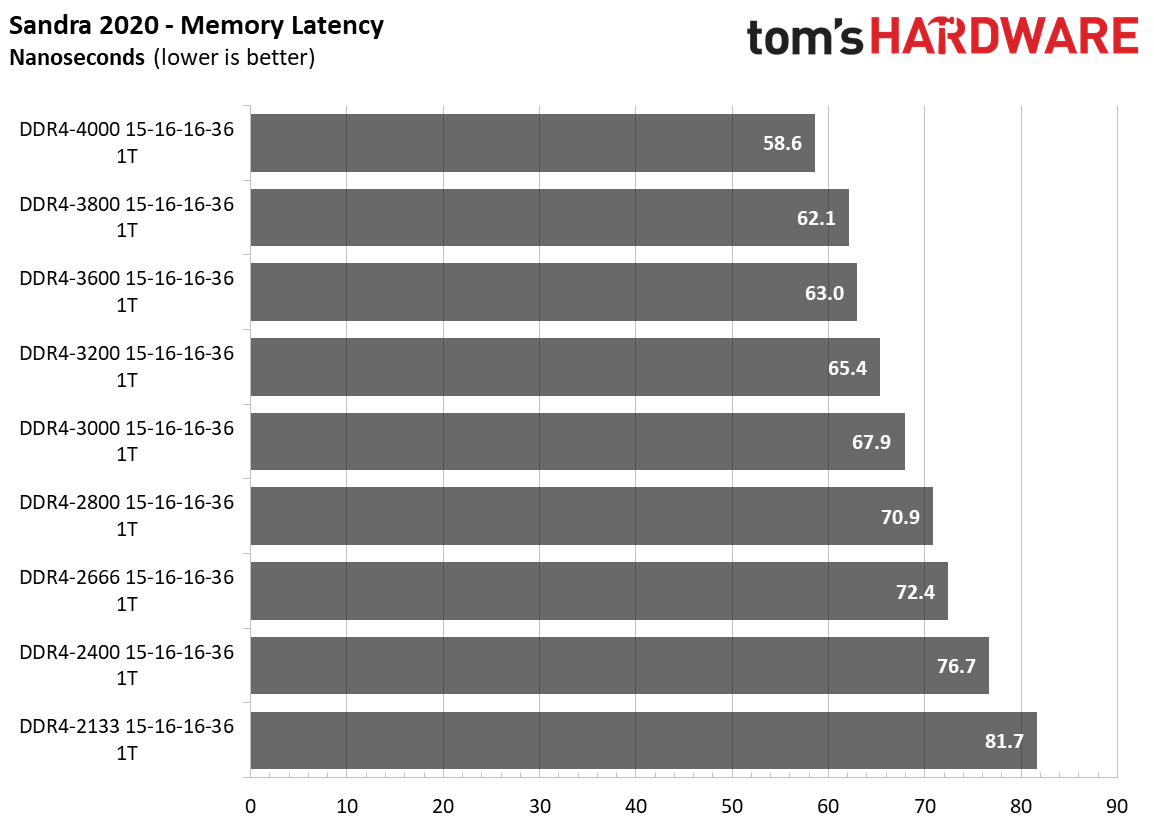
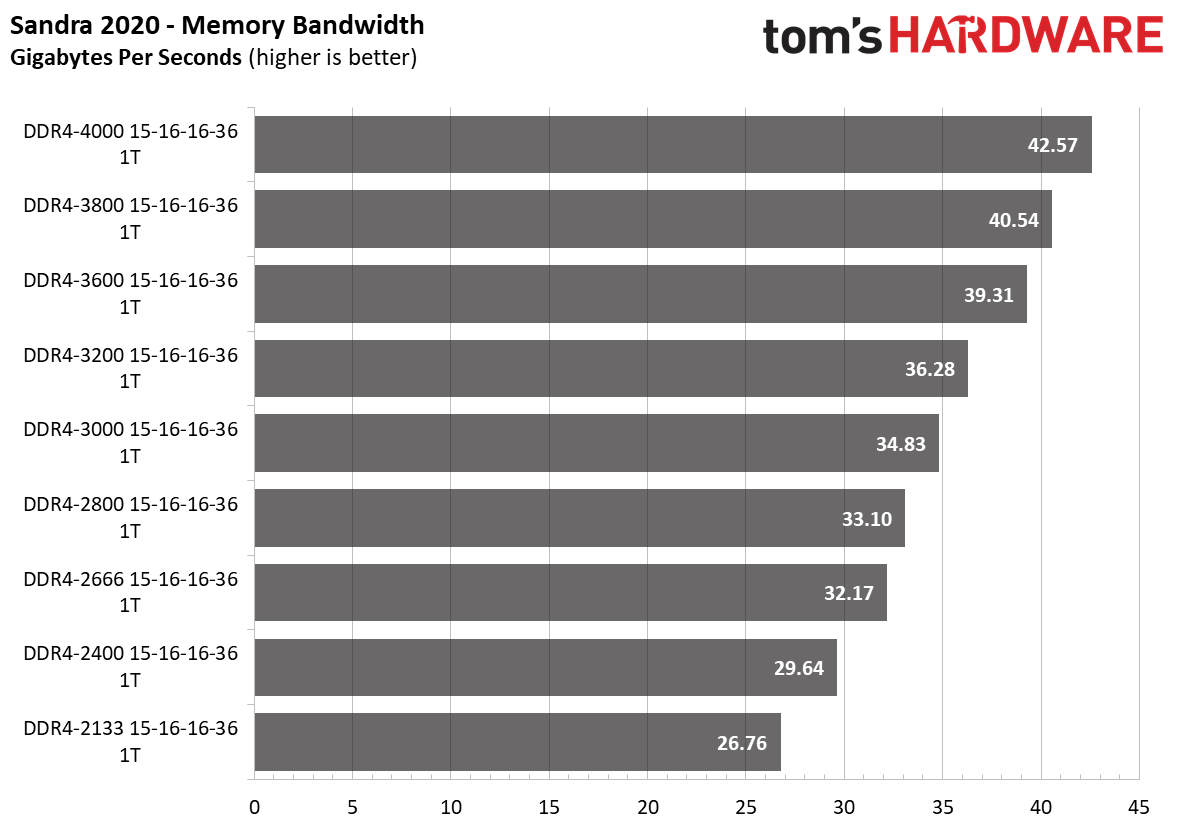
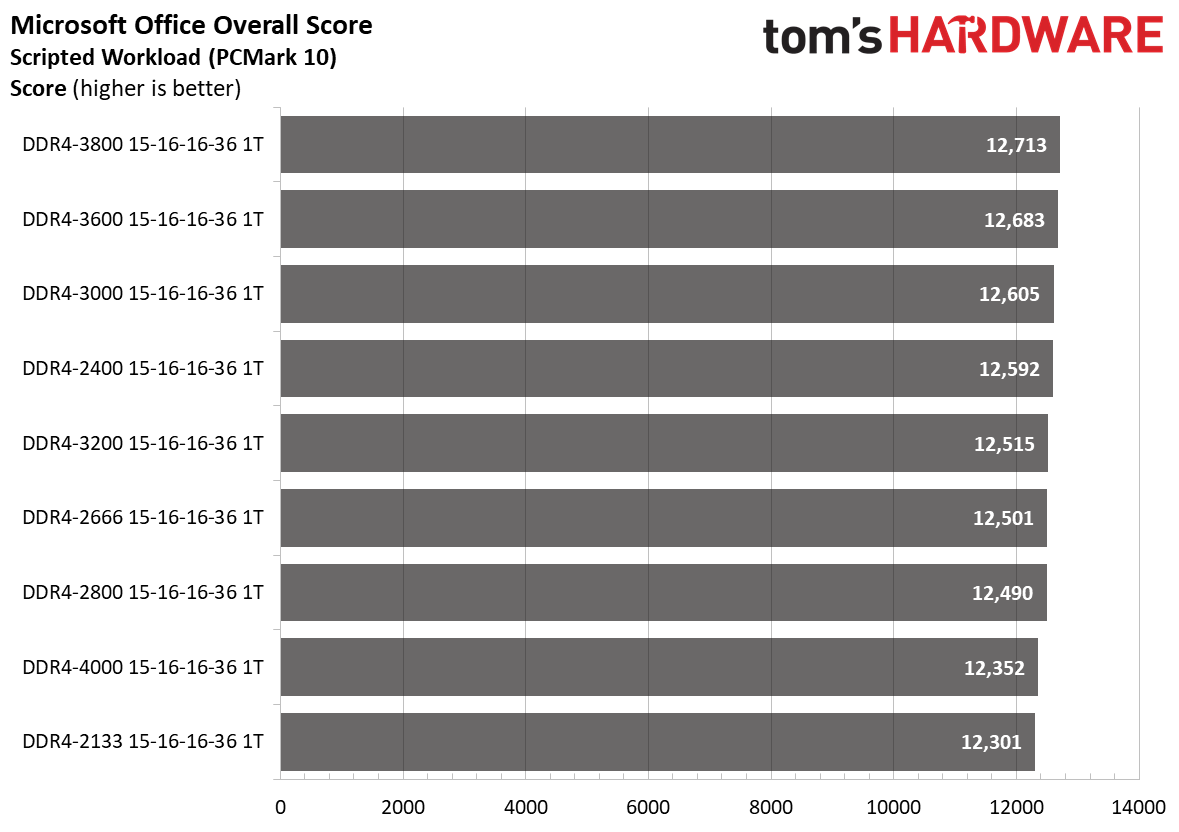
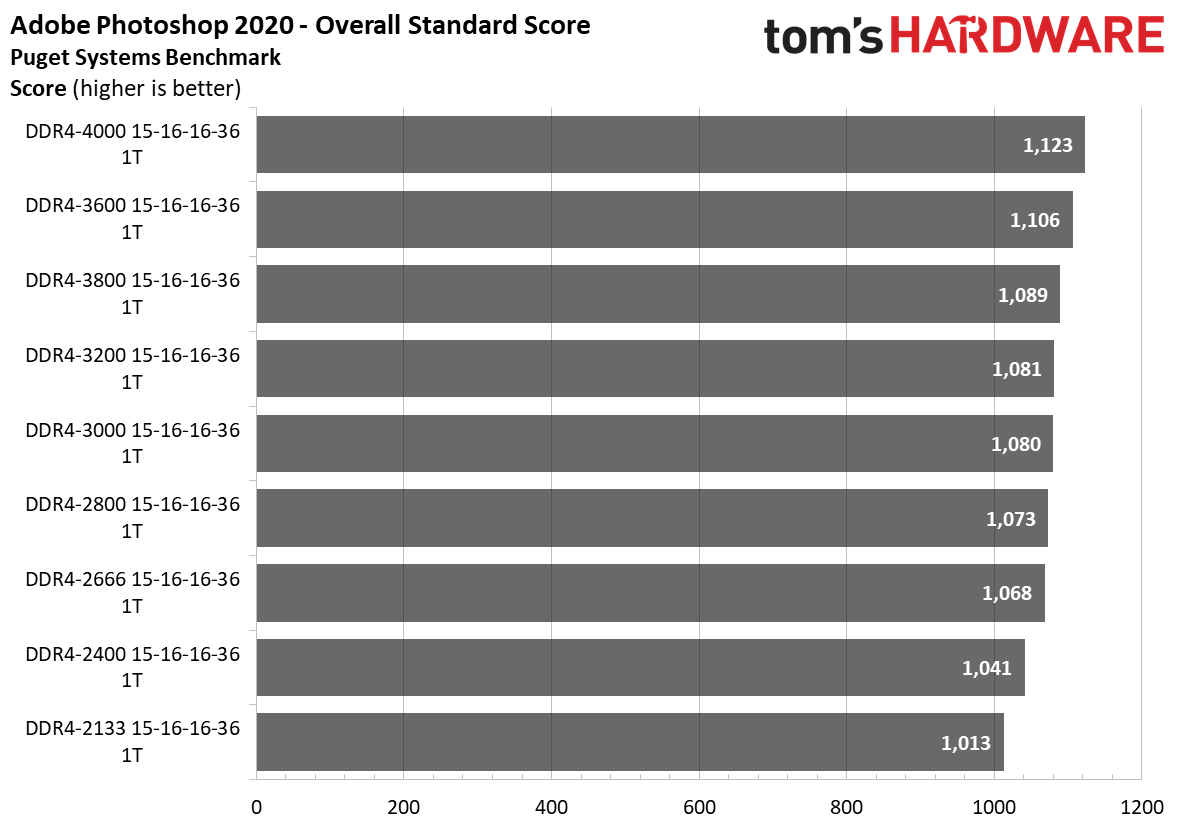
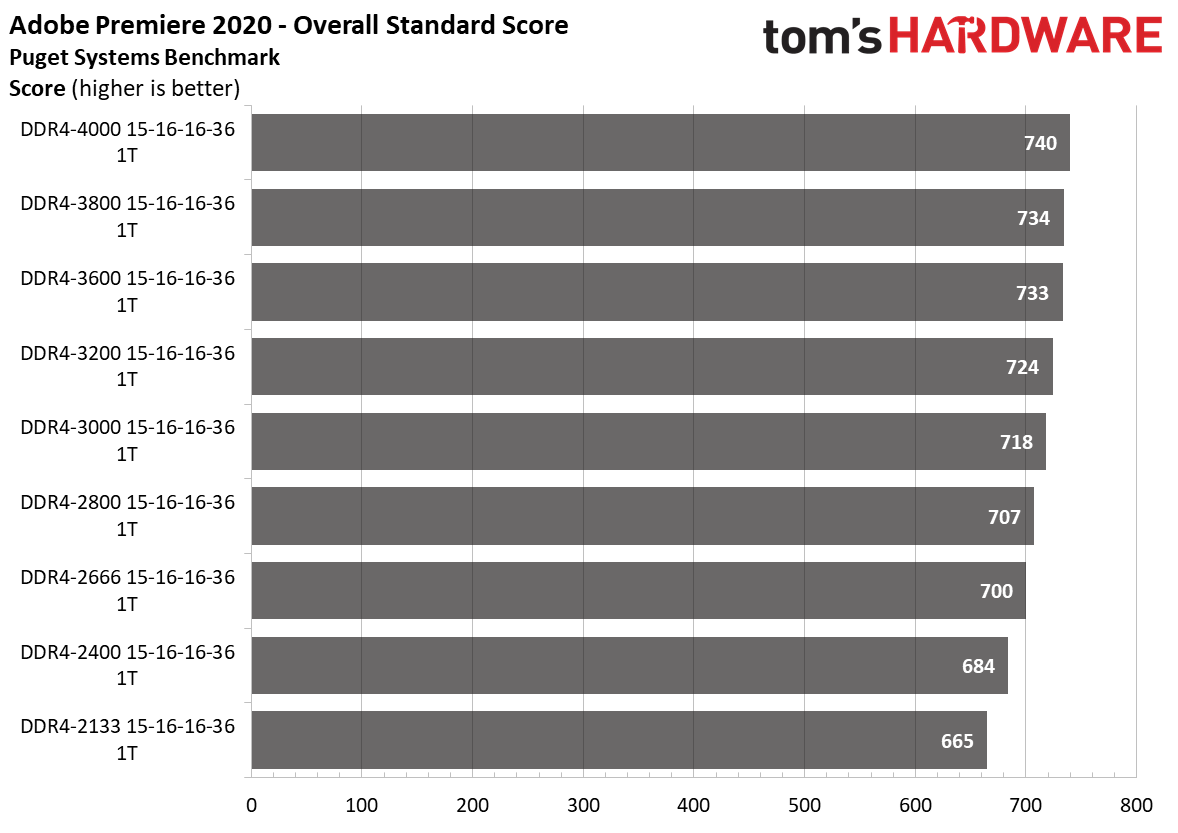
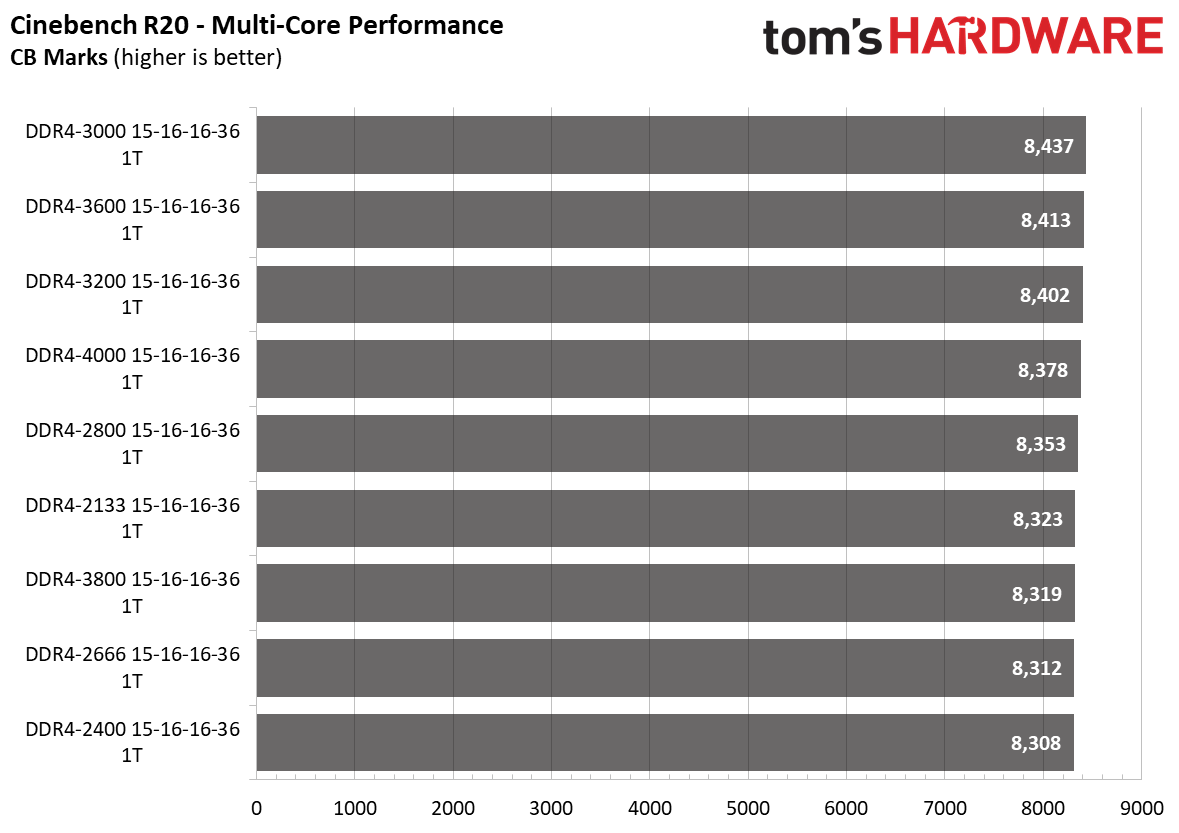

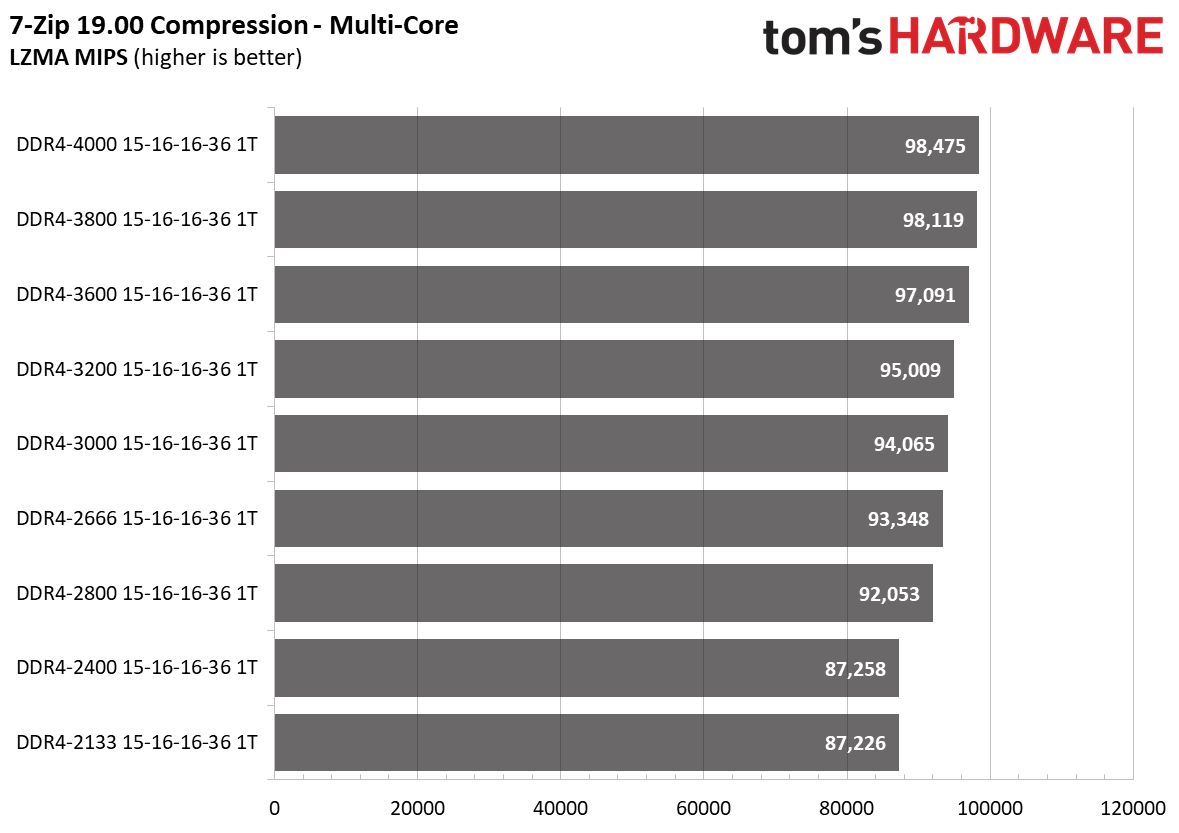

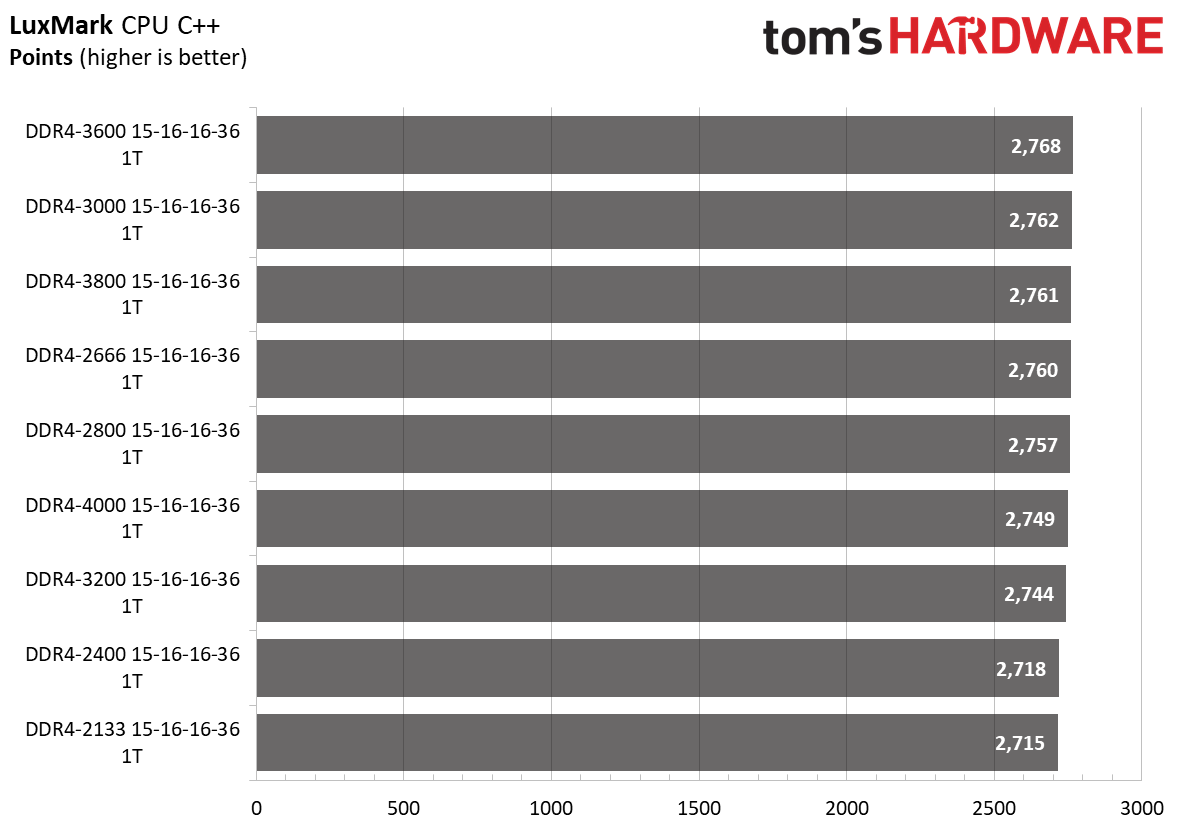
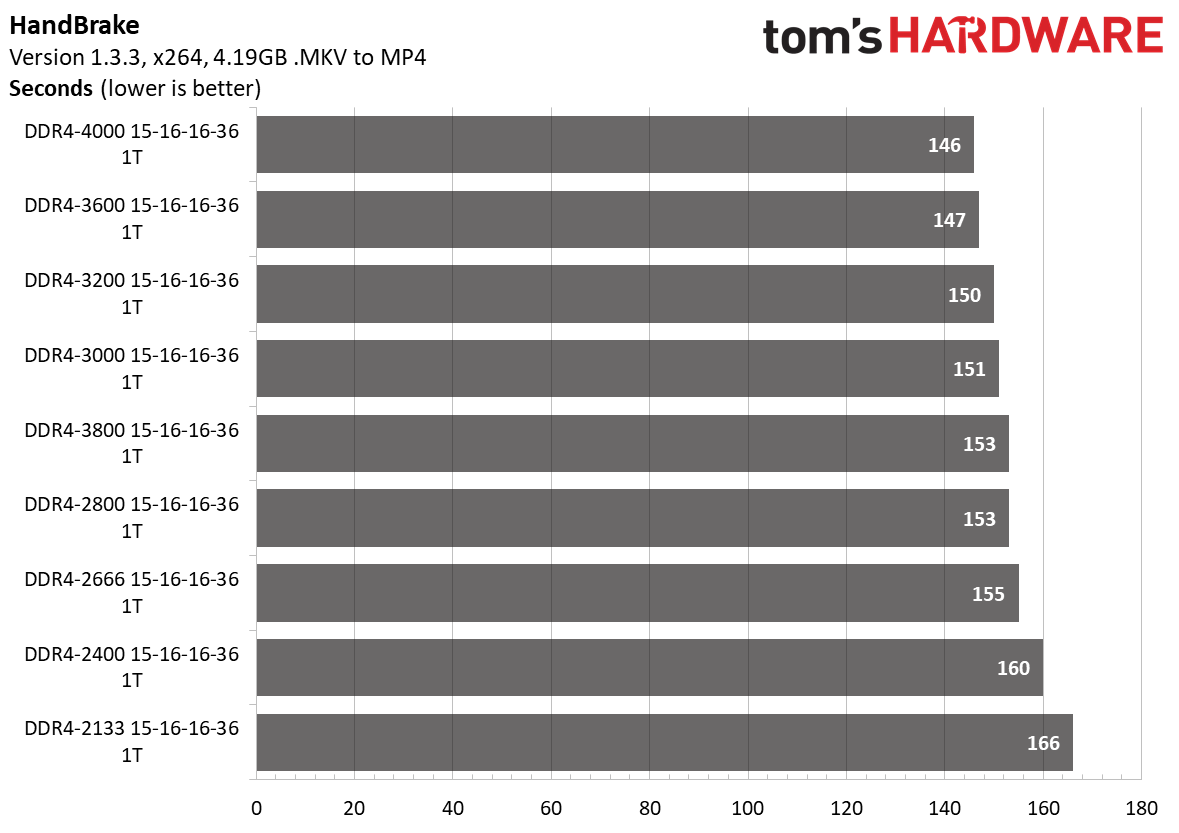

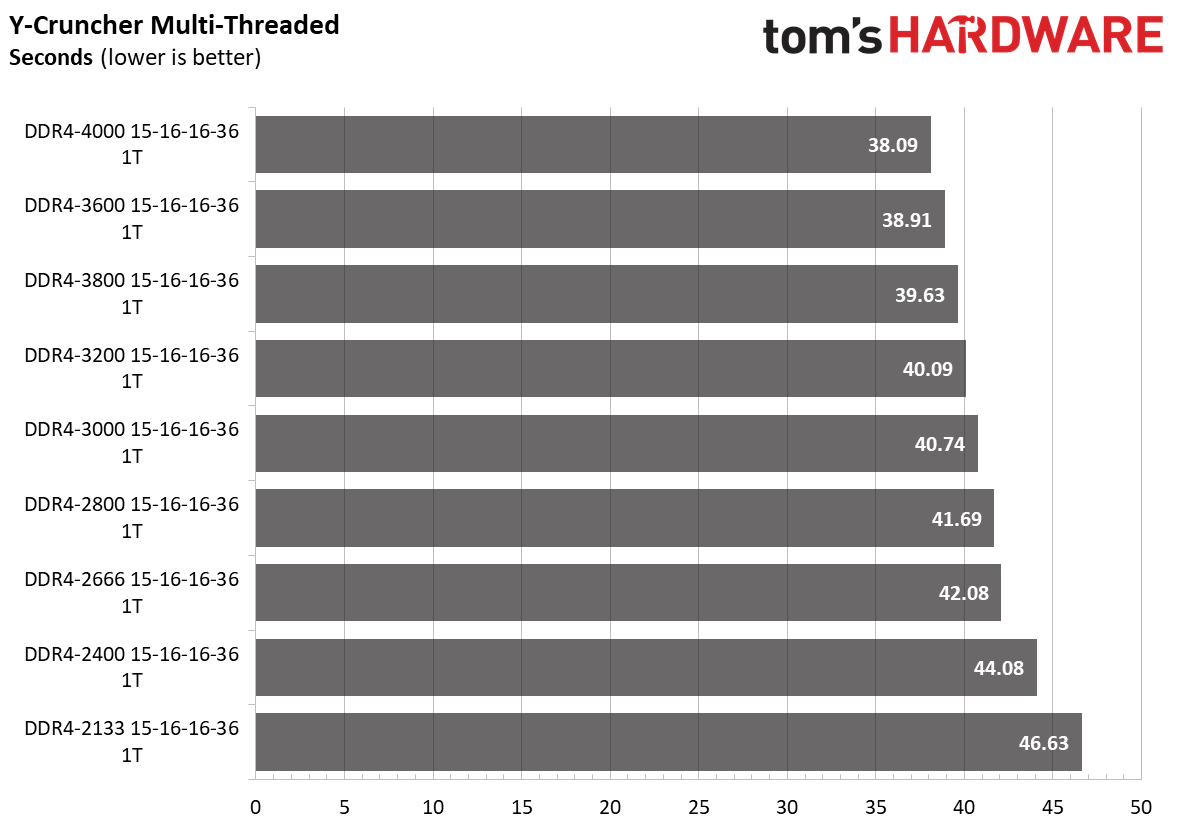
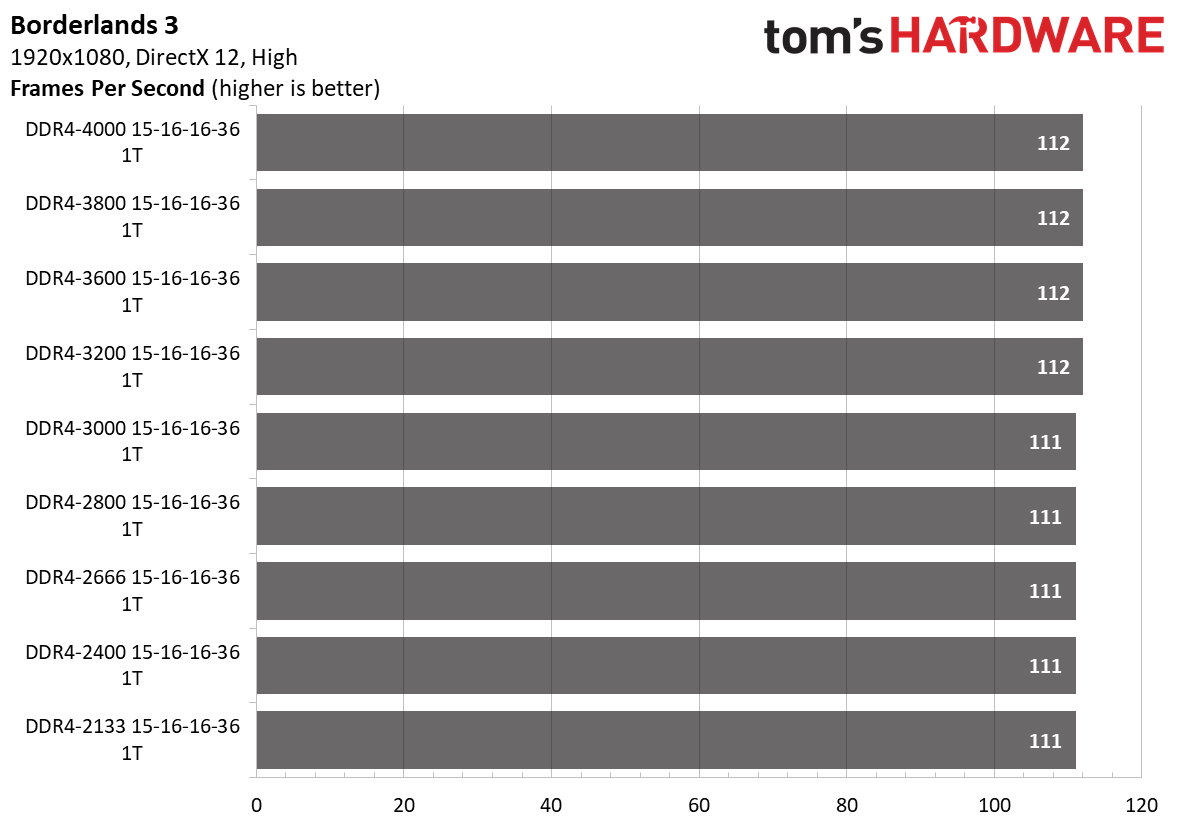






DDR4-3200 should unquestionably be the starting point for Ryzen 5000. We recorded a 5.8% performance difference between DDR4-2133 and DDR4-3200, the native frequency supported on Zen 3. Our test results confirmed that DDR4-3600 is still the sweet spot for this generation, though. It delivered 7.2% more performance than DDR4-2133. Compared to DDR4-3200, however, DDR4-3600 was only 1.3% faster.
Unsurprisingly, DDR4-4000 is the ultimate goal if your processor and budget allow for it. The performance gap between DDR4-2133 and DDR4-4000 stretched as high as 7.7%. Compared to DDR4-3200 and DDR4-3600, DDR4-4000 provided small uplifts in the range of 1.8% and 0.5%, respectively.
In a gaming environment, DDR4-4000 and DDR4-3600 offered 4.2% and 5.6% better frame rates, respectively, than DDR4-2133. As always, memory frequency only impacts specific titles where the processor does all the heavy lifting and the game engine responds well to improved memory performance. For example, DDR4-4000 netted up to 6.1% better frame rates than DDR4-2133 in Shadow of the Tomb Raider and up to 19.7% in Far Cry New Dawn.
Single-Rank vs. Dual-Rank
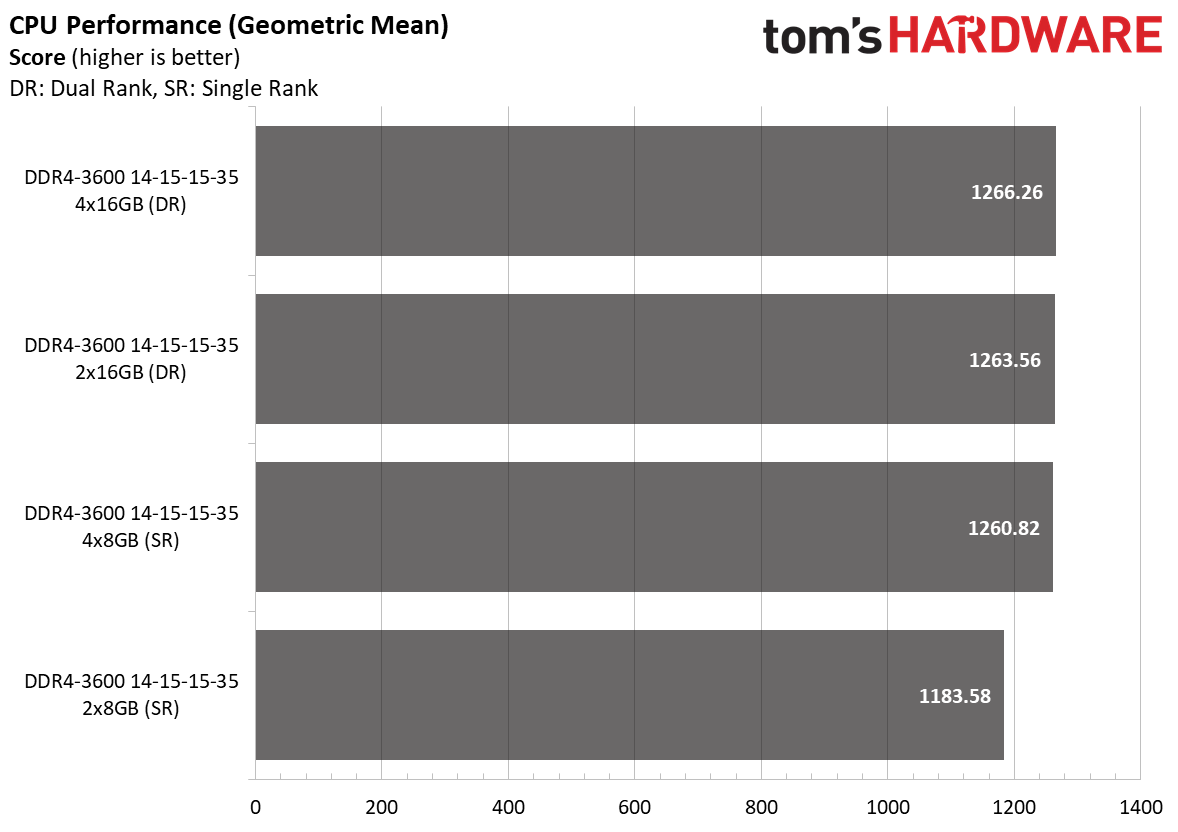
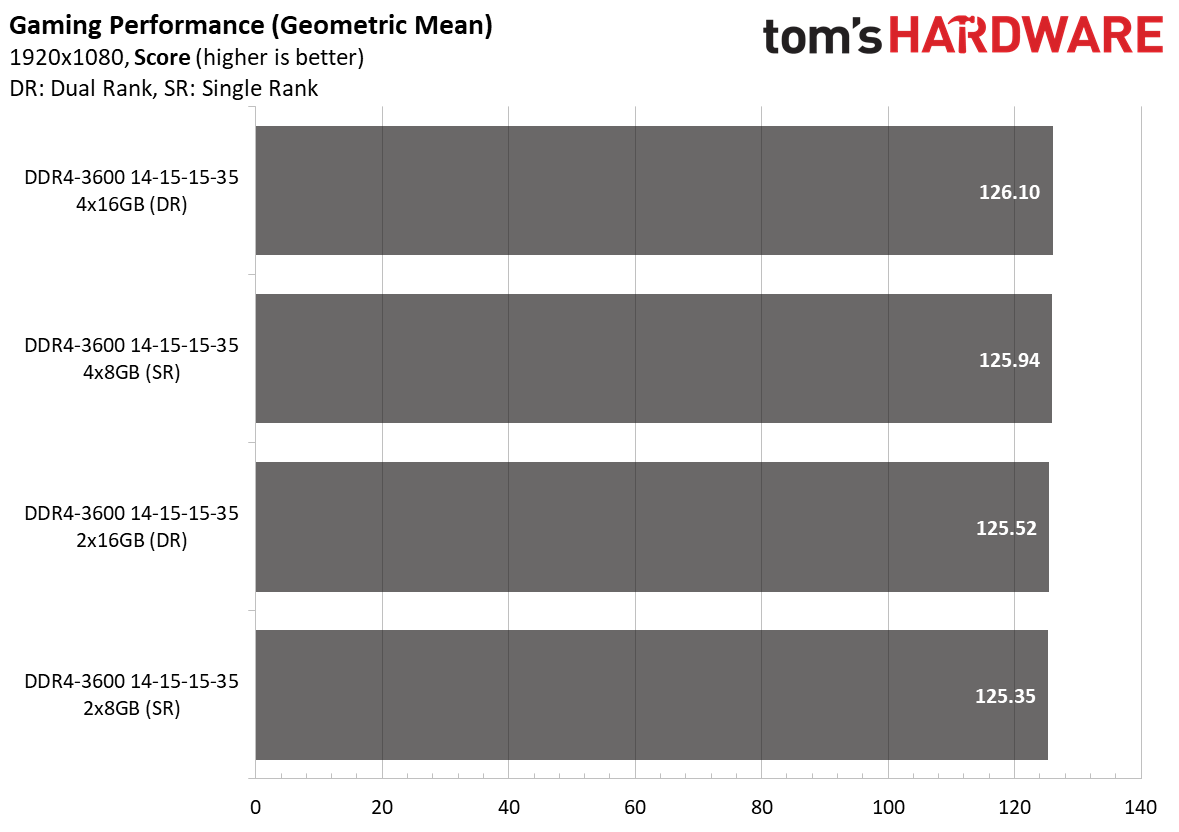

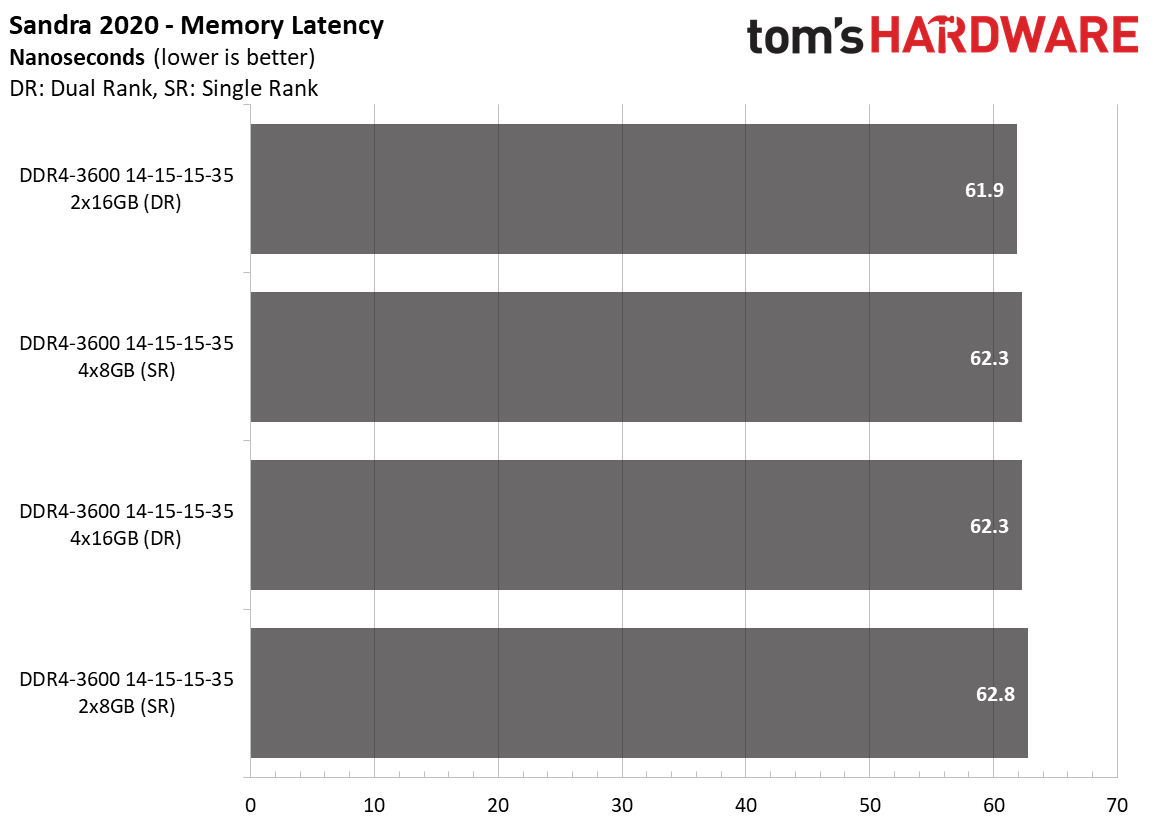
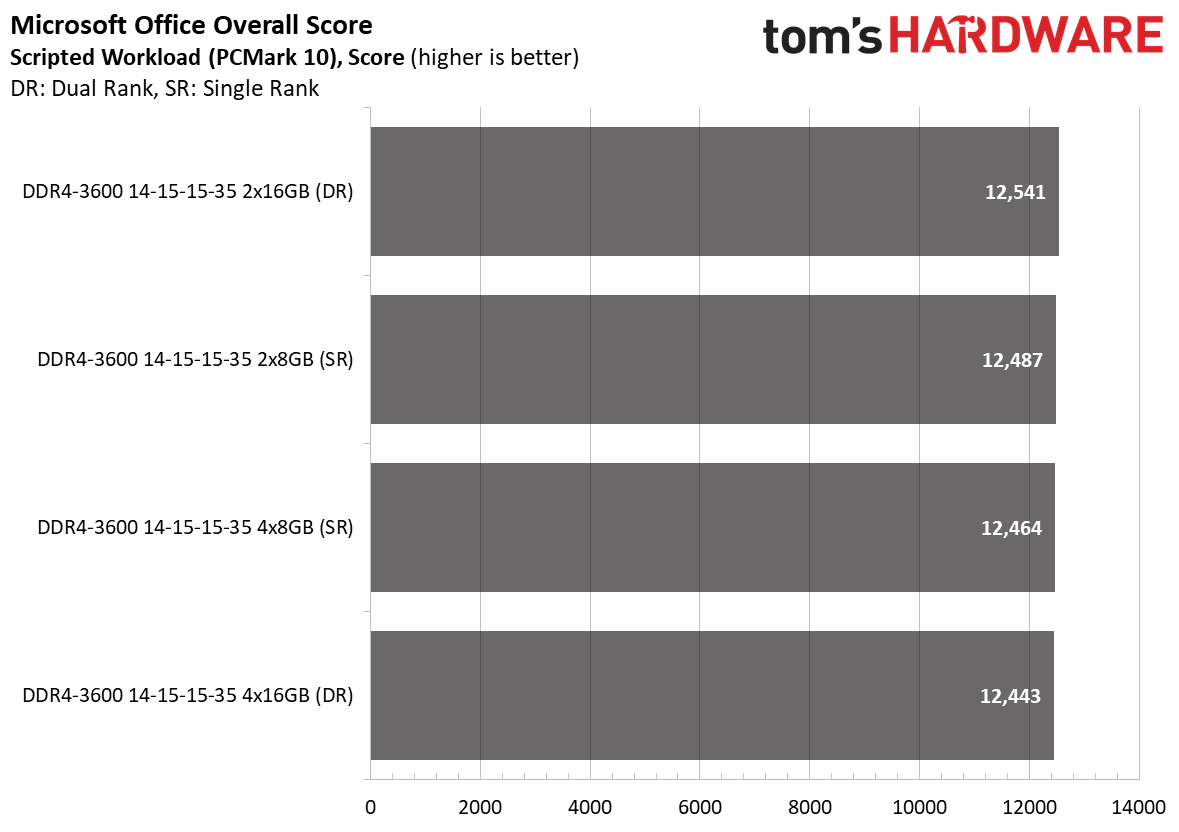
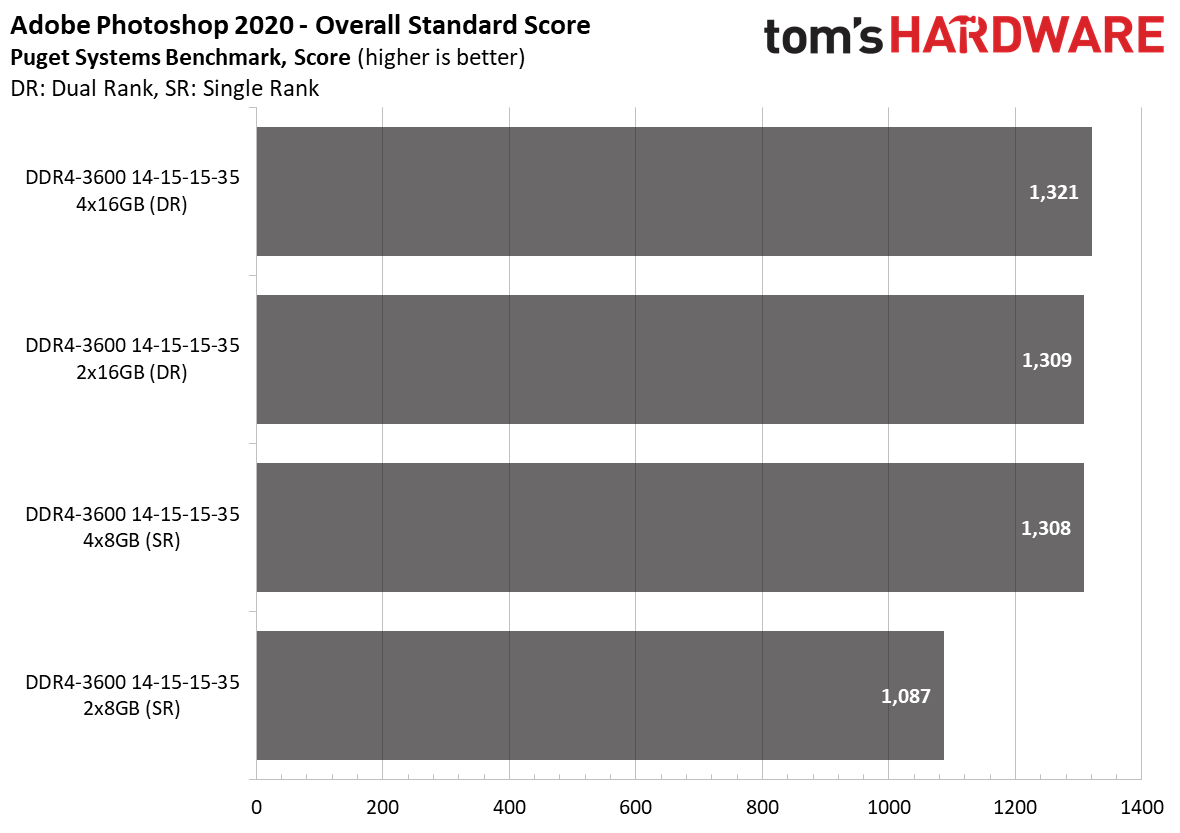

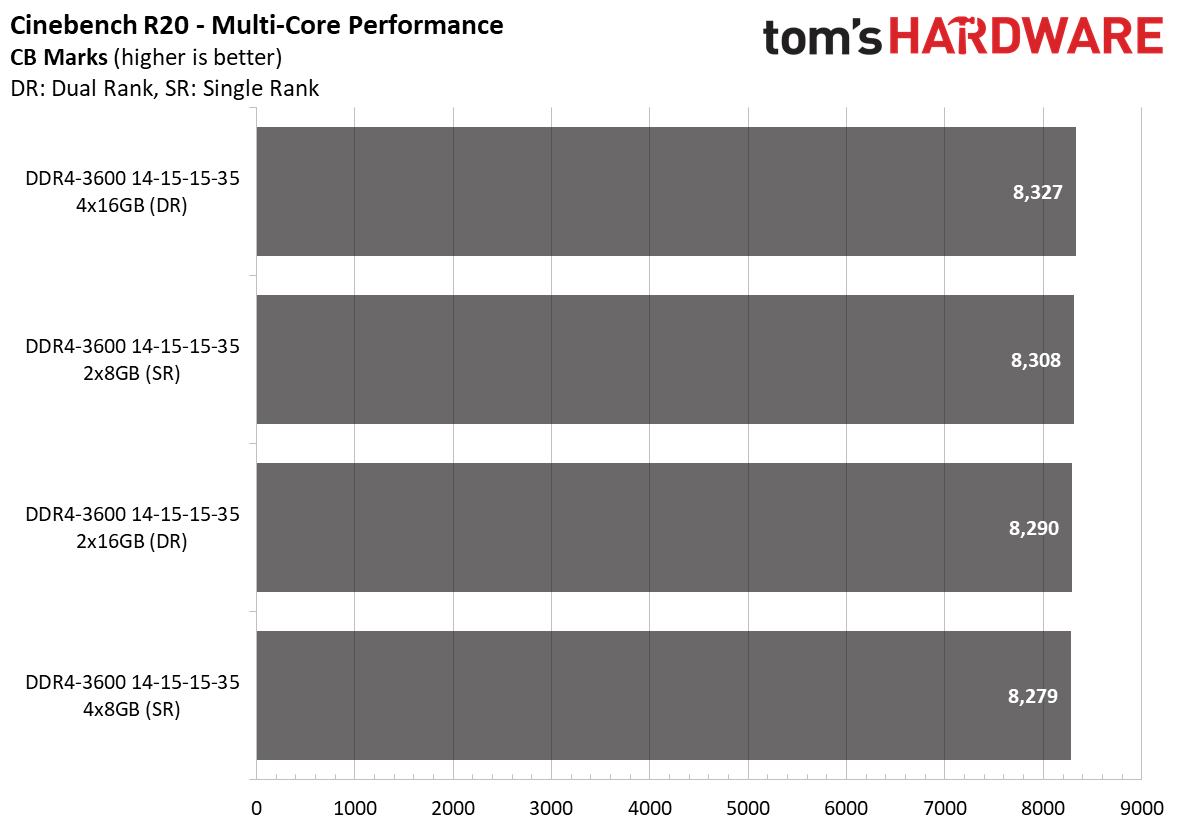
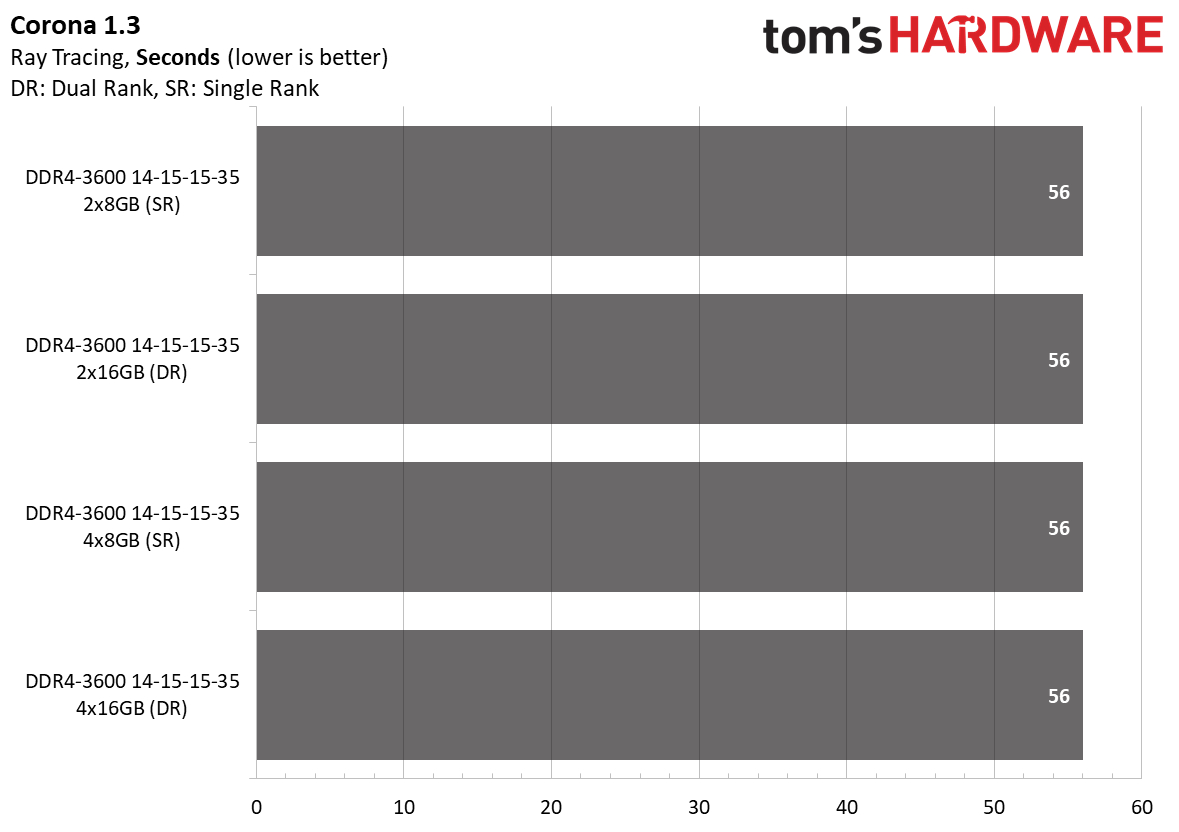
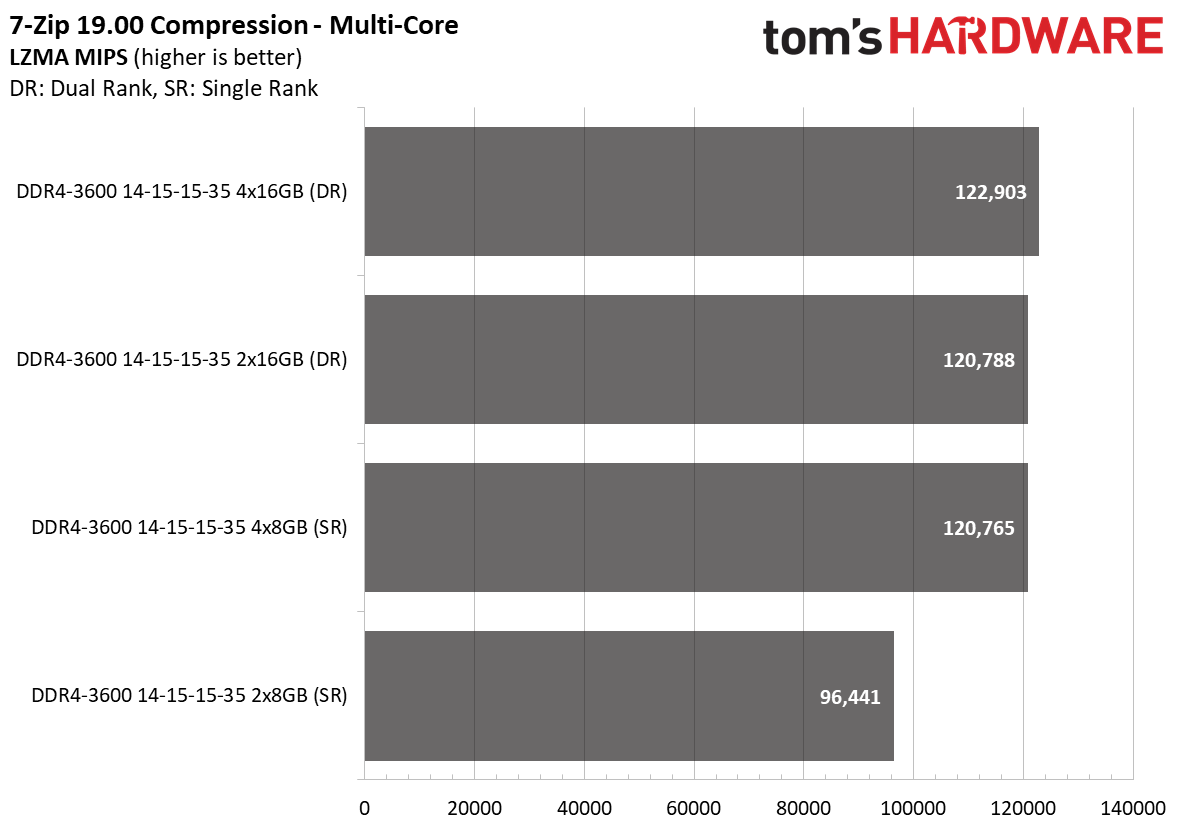
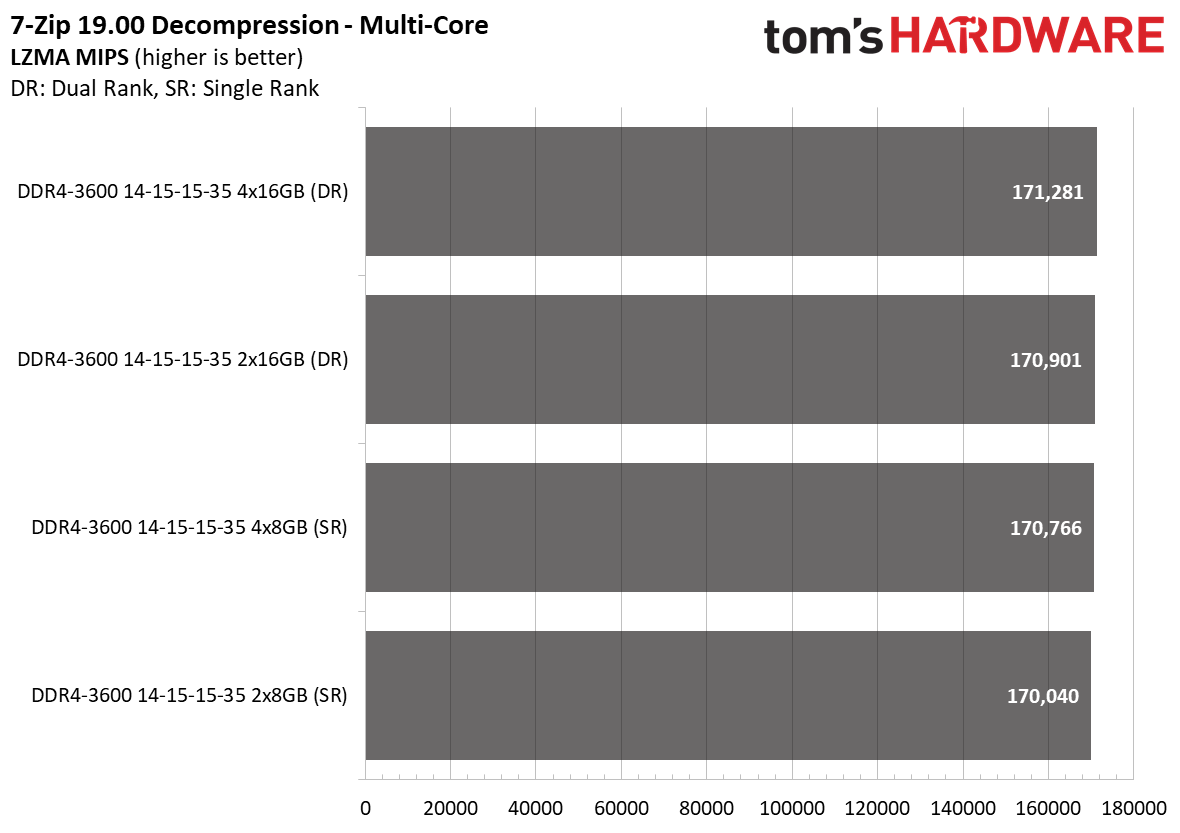
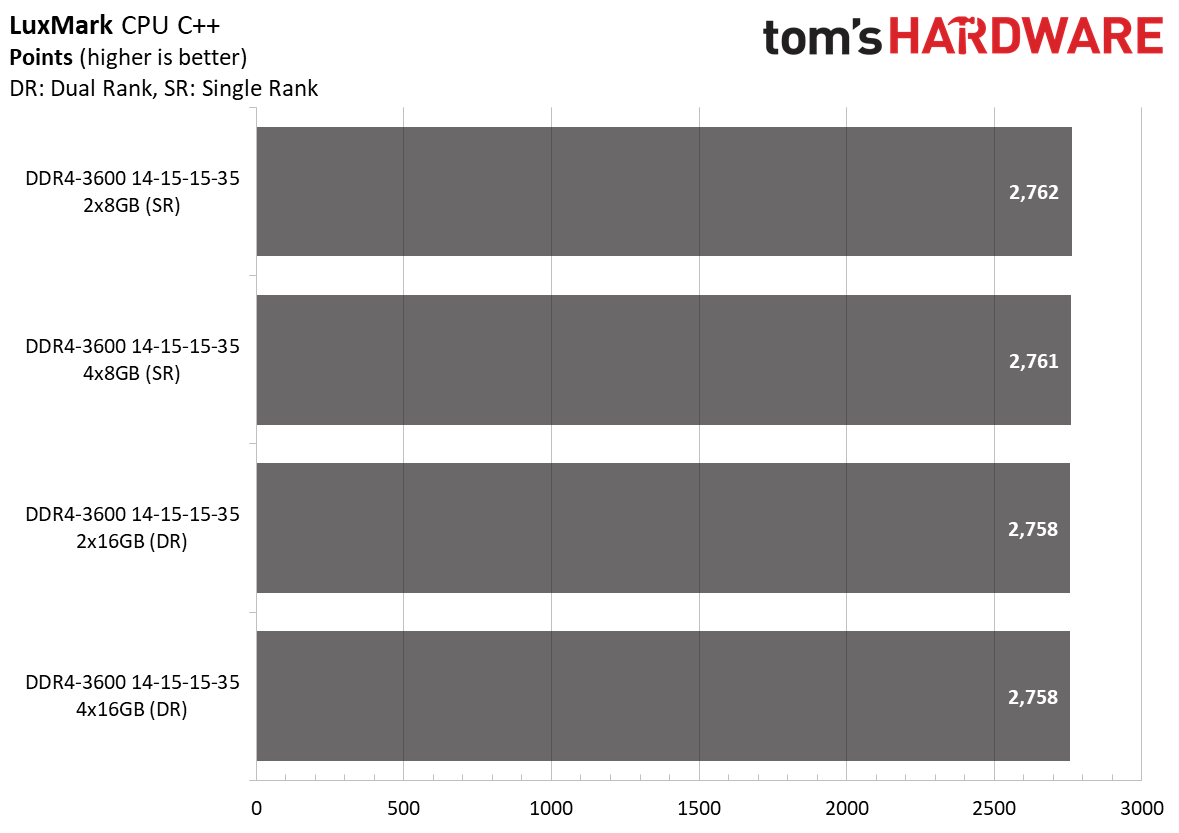
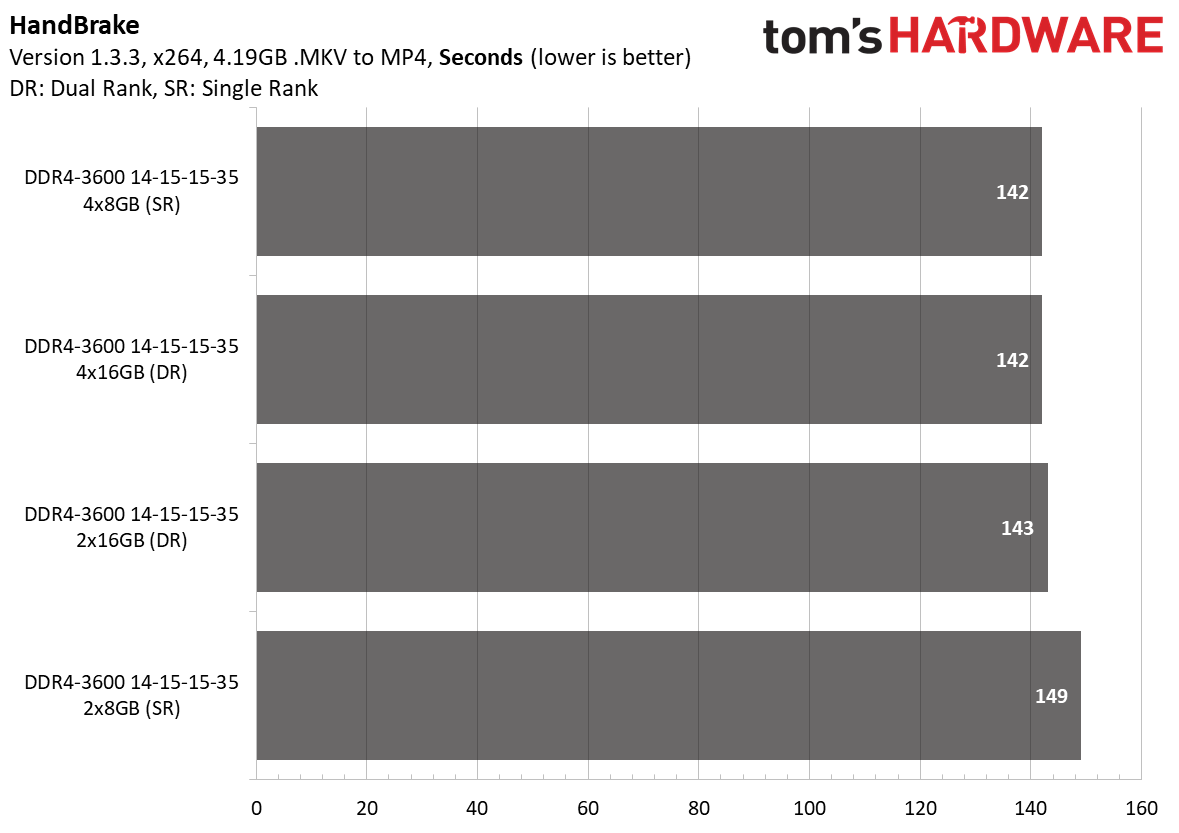
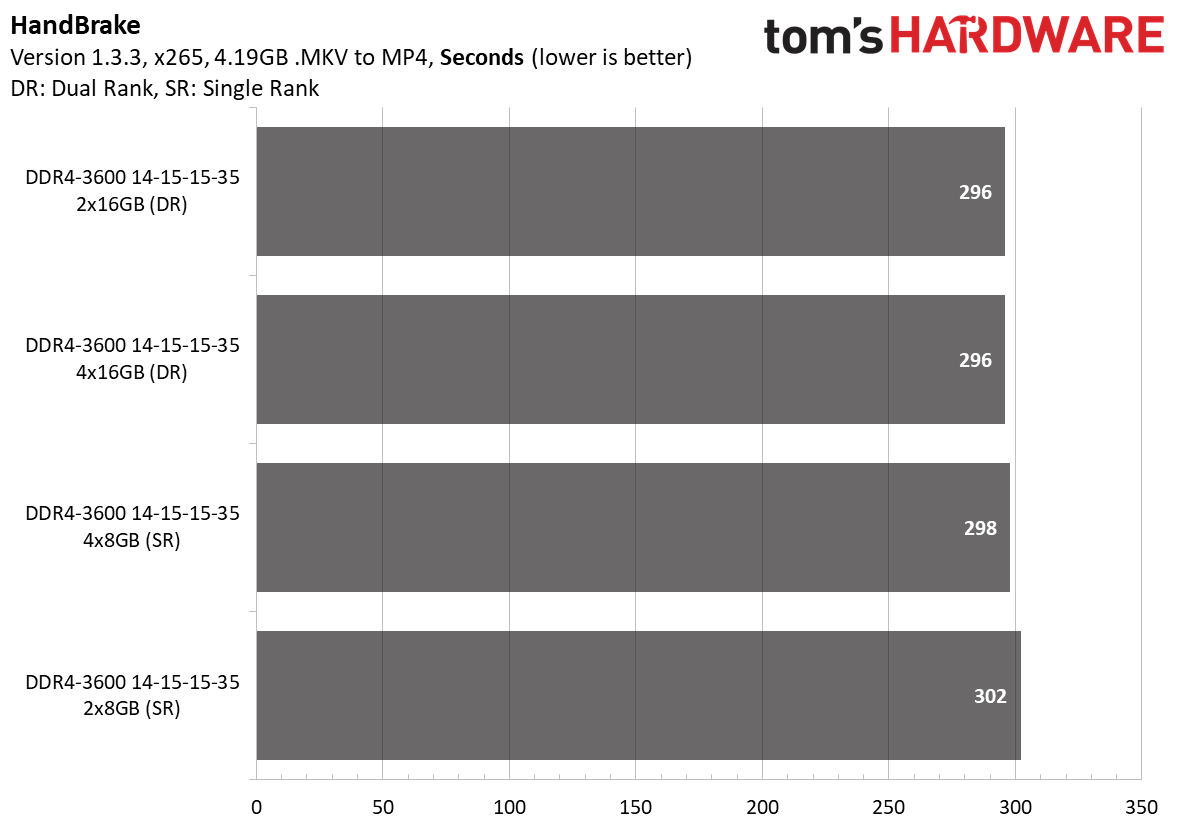
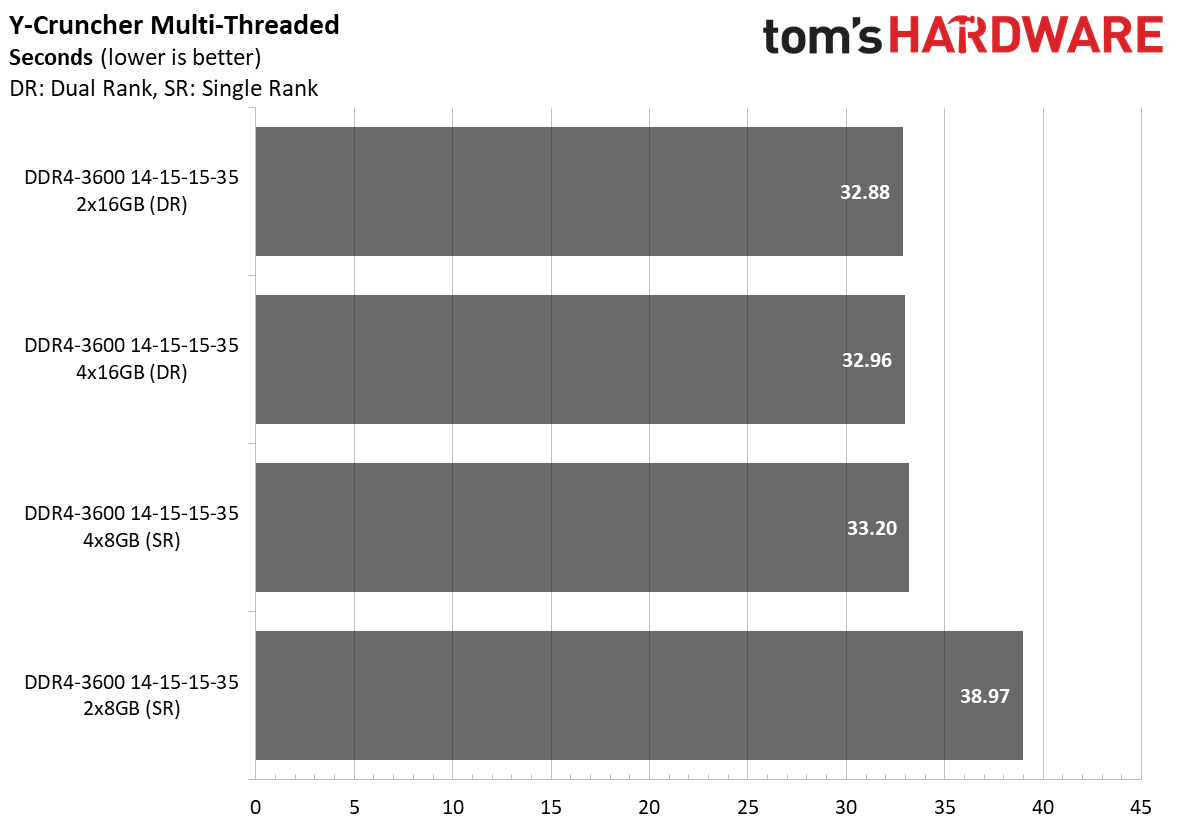

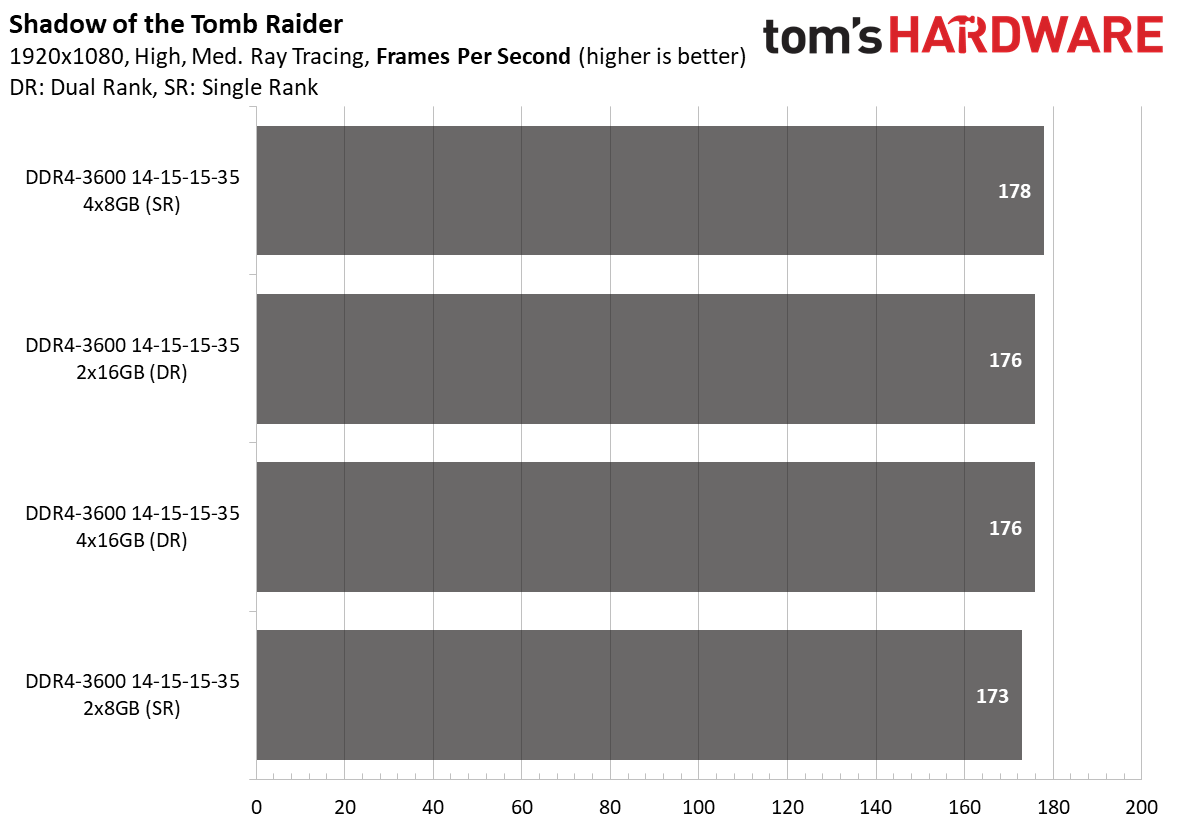
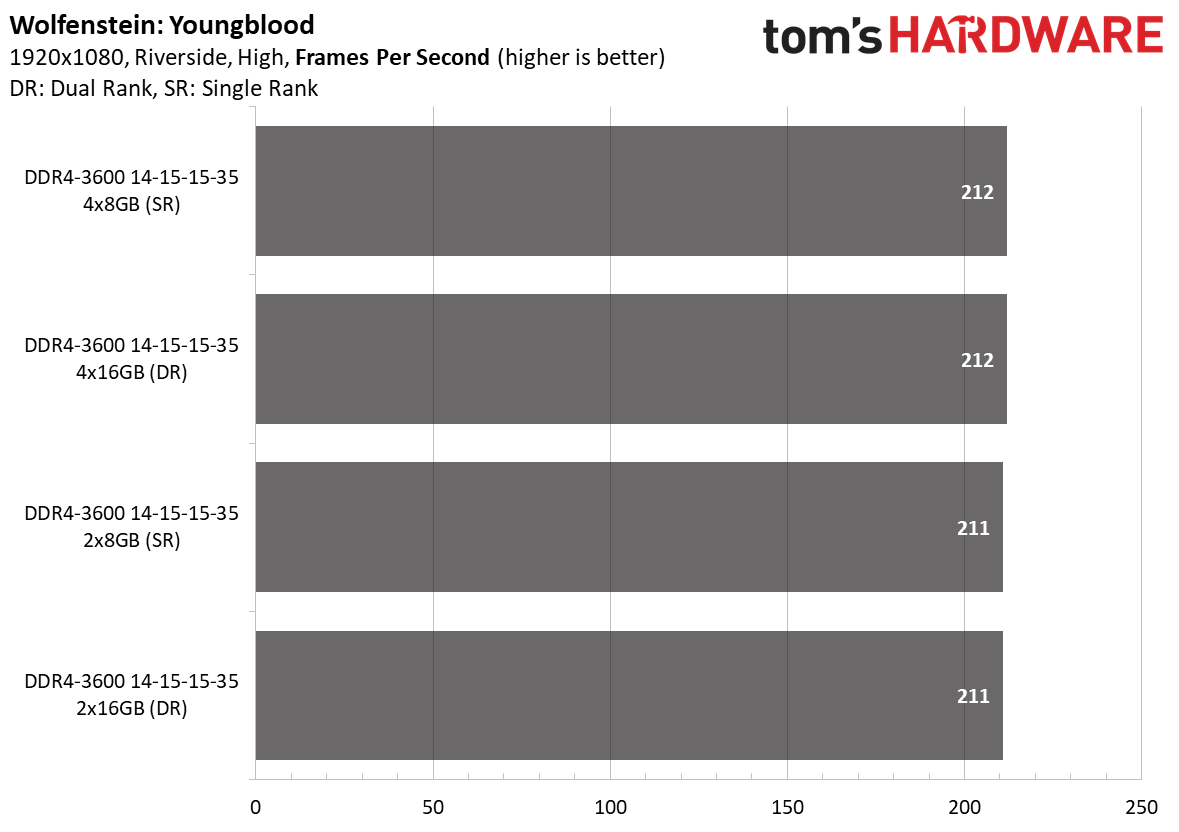
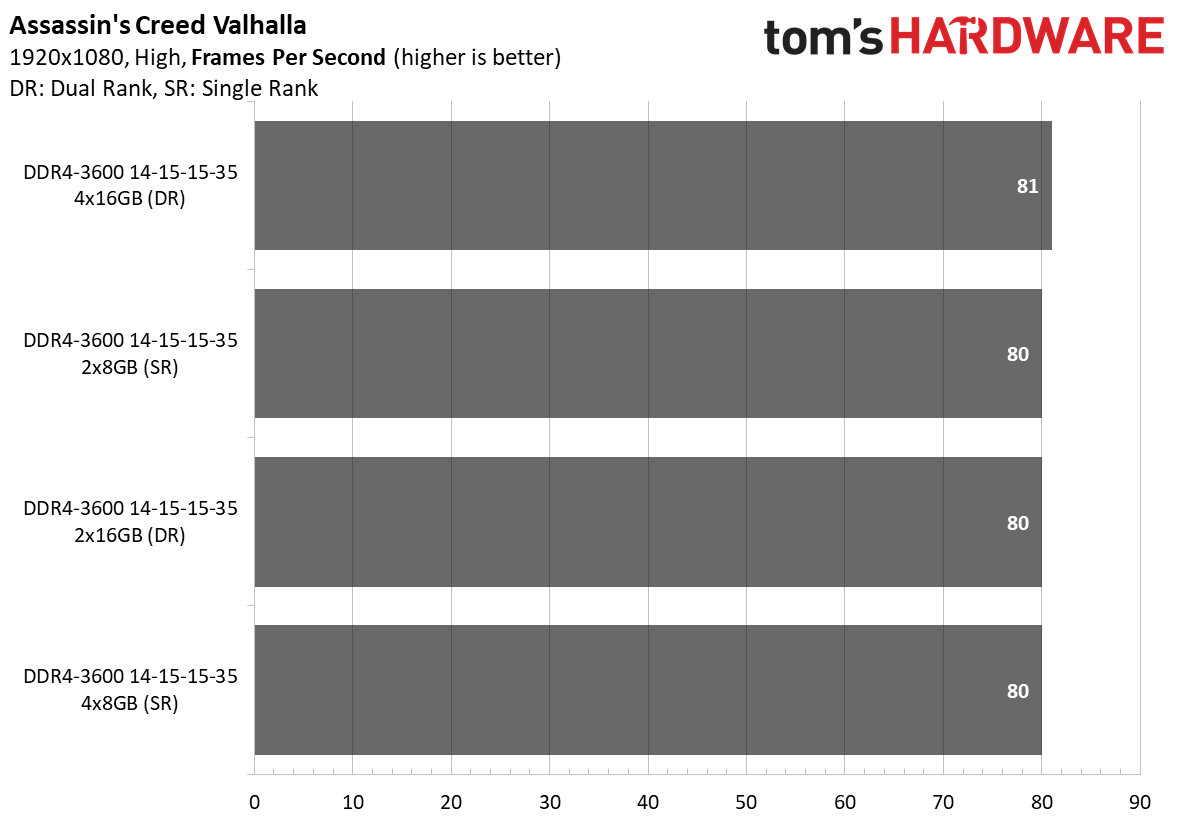
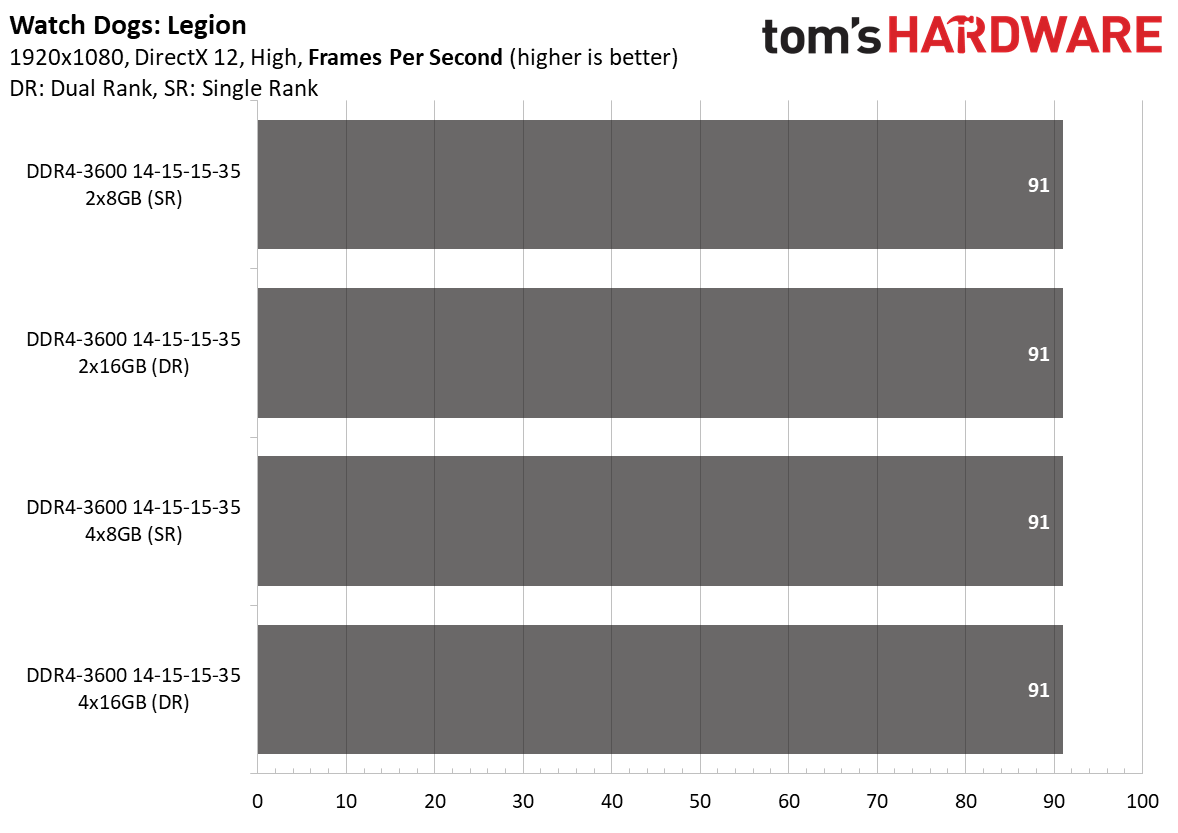
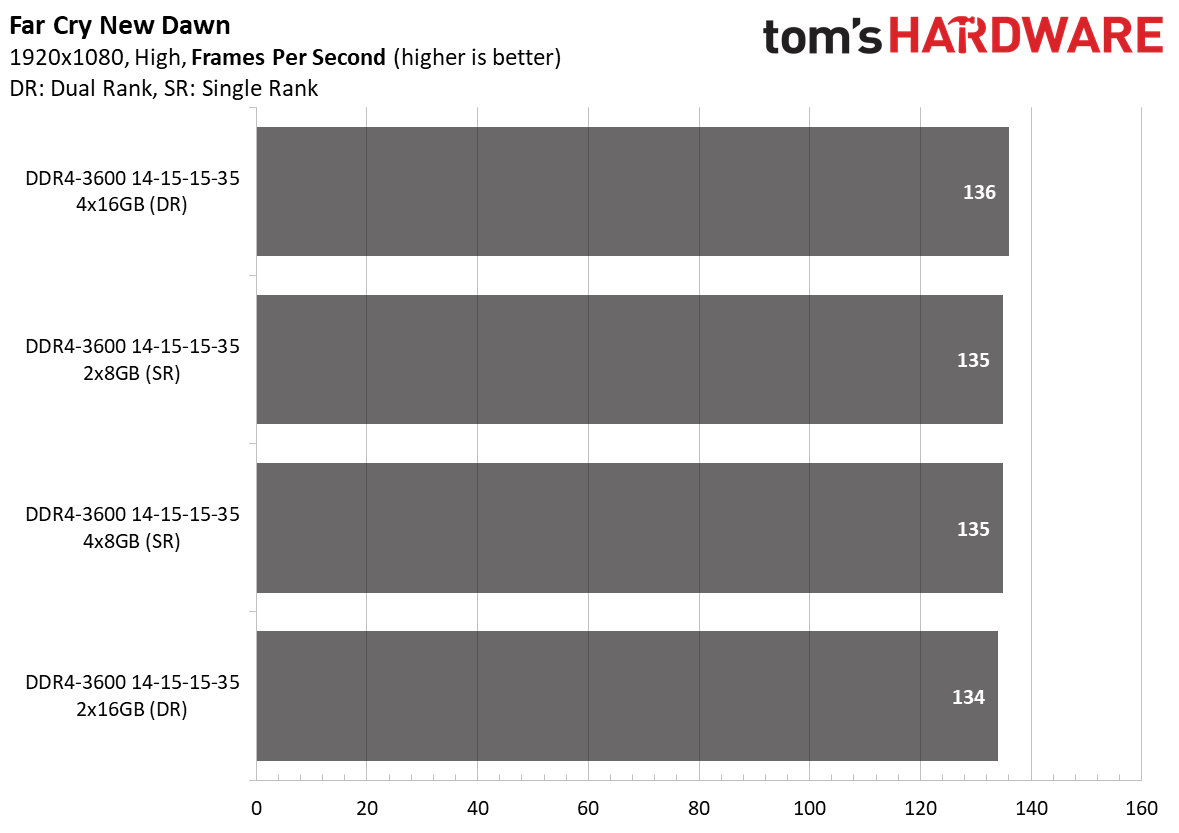
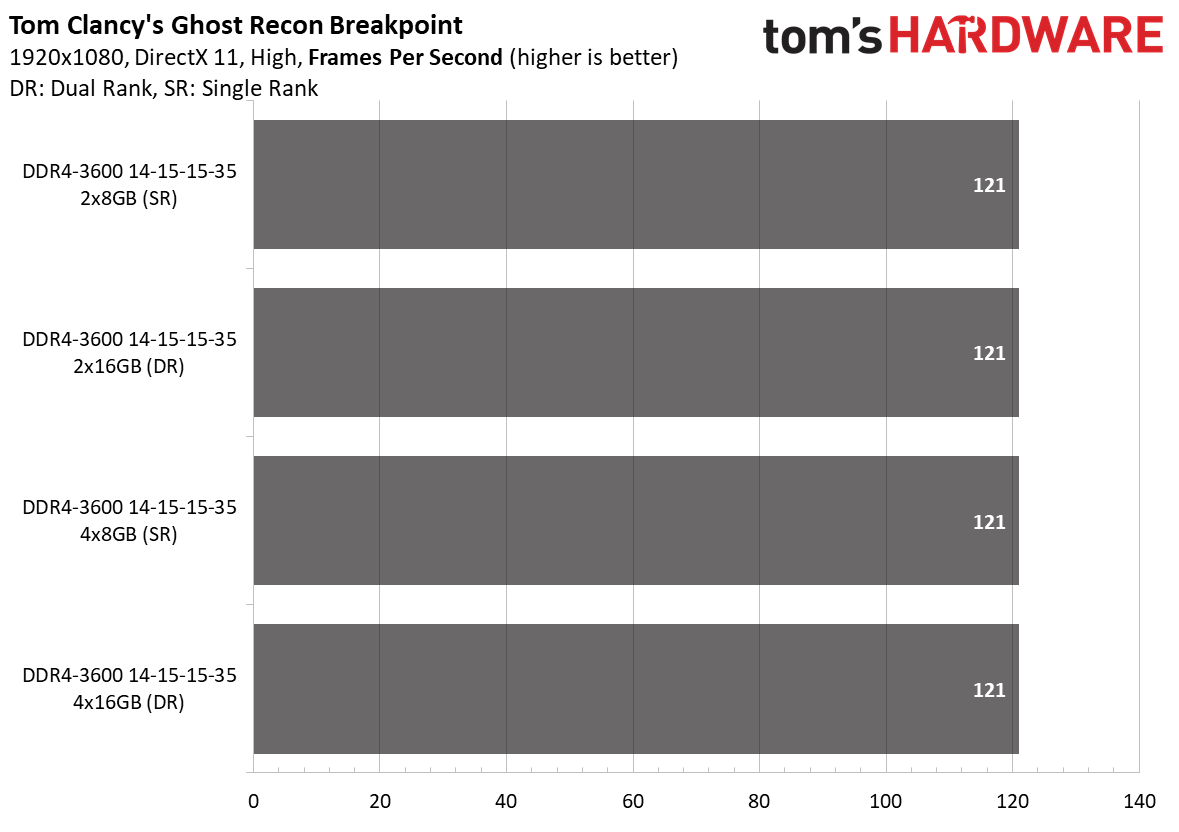
On average, dual-rank memory offered up to 7% more performance than single-rank memory in our application tests. In gaming, however, it made almost zero difference. Naturally, not every workload will respond positively from more memory ranks or higher capacity — only memory-sensitive workloads will likely benefit from the aforementioned attributes.
The 2x16GB setup presented 20.4% and 6.7% performance gains over the 2x8GB setup in Photoshop and Premiere, respectively. We saw similar improvement in performance in y-cruncher and 7-Zip's compression benchmark where the 2x16GB memory kit outperformed the 2x8GB memory kit by 15.6% and 25.2%, respectively.
Four memory ranks are definitely the way to go for Ryzen 5000. On an AM4 motherboard with four DDR4 memory slots, you can opt for a memory kit that's comprised of two dual-rank or four single-rank memory modules. The cumulative results showed a negligible difference between the two setups.
Our Key Takeaways
- For the majority of users, leaving Geardown Mode alone is the most sensible option. If you want that last bit of performance, you'll have to experiment with the option to see whether there is any gain for disabling it since Geardown Mode's influence on performance is workload-dependent.
- From a performance standpoint, DDR4-3200 is the baseline for Ryzen 5000, while DDR4-3600 remains the sweet spot. Obviously, DDR4-4000 is the cream of the crop for performance purists. Do bear in mind that not every Ryzen 5000 processor can operate with a 2,000 MHz FCLK, but AMD's continued commitment to improving its AGESA code helps make it a reality for the majority.
- When it comes to memory timings, tighter values are always better. While we tested at CL15 to ensure an apples-to-apples comparison, the best DDR4-3200 and DDR4-3600 memory kits on the market come with CL14. At the time of writing, the fastest DDR4-4000 memory kit is rated for CL15.
- Memory ranks often don't contribute to better gaming performance on Ryzen 5000, but memory frequency does in an environment where your graphics card isn't the bottleneck and the title taxes the processor heavily.
- Even on Zen 3, four memory ranks are still the ideal configuration for getting the best overall performance out of your Ryzen 5000 processor, particularly in applications. With today's capacity, this basically translates to having at least 32GB of memory in your system, whether it be two dual-rank or four single-rank memory modules. Most of the time, the first option is always easier on the pocket.

Zhiye Liu is a news editor, memory reviewer, and SSD tester at Tom’s Hardware. Although he loves everything that’s hardware, he has a soft spot for CPUs, GPUs, and RAM.
-
escksu I don't really agree with the review in the sense that DDR3200 is the baseline... I would say its actually the sweet spot. Unless you have spare budget which cannot be used for anything else, then you spend it on upgrading your RAM.Reply
Of course, what I am saying applies to mainstream users. If you are running photoshop or premiere or do video encoding frequently, I wouldn't consider you as mainstream user. -
damric It's a very weak article overall. Ever since they went to the format of "best of" links trying to sell you crap the content here has gone to hell.Reply -
BogdanH Reply
I think it depends on what we understand as "baseline" and "sweet spot".escksu said:I don't really agree with the review in the sense that DDR3200 is the baseline... I would say its actually the sweet spot.
In that sense, I do see DDR3200 as baseline (a speed to start with). It doesn't really make sense, that someone who buys 5000 series CPU, would buy slower RAM -especially because price difference is quite small.
About "sweet spot"... just need to say I don't like that "fancy" term -because it tells nothing. Saying that, next step above "baseline" would be "advanced" or "professional" use -where DDR3600 suits best for performance and stability. -
danlw So in the single rank vs dual rank analysis we learn that... 32+GB is almost always better than 16GB?Reply -
bigpinkdragon286 Fine article, but does this differ much from previous Ryzen generations? I was under the impression it was sussed out already, RAM speed matters more with a Ryzen CPU than it's direct market competition, and 3200 MT/s is nearing that point of diminished returns. Yes, you can gain more, but the cost benefit analysis doesn't pencil well so one makes a personal judgement call whether to invest further. There is more performance to be had, but whether it's worth it is hardly something I would decide for others.Reply -
VforV I think I stick to what Hardware Unboxed memory tests shown already. Plenty of videos on their channel.Reply
About dual ranks vs single rank HU already proved that dual rank is faster most of the time and enough to be worth it, especially in gaming.
They also showed that 4 x 8GB SR sticks will work as DR automatically when used together. That's why it shows this even in your graph, but you failed to underline that and thus your conclusion was wrong. Or you just don't know, plain an simple.
As for frequency and timings these are by now almost accepted as an unspoken law:
3200 is base, 3600 is the sweet spot and anything above that is for enthusiast class.
CL 18 is max accepted only at high frequencies, CL 16 is base at any speed and anything below that (CL15, CL14) is again, for enthusiast class. -
mathew7 What I don't like about this "guide" is that they stick to the same numbers for latencies. They should stick to the same "time", not "cycle numbers".Reply
CAS time is dependent only on memory voltage thus JEDEC speeds will have higher CAS times than XMP which is overvolted.
As in:
CL15@2133 15/(2133/2)ms = 14ns (in this test)
CL15@4000 15/(4000/2)ms= 7.5ns (in this test)
CL8@2133 8/(2133/2)ms = 7.5ns (should been tested considering CL15@4000 runs)
CL28@4000 28/(4000/2)ms = 14ns (or this should been tested if CL15 was best for 2133)So for a "speed-only" comparison, CL should have been adjusted for each speed to be just above 7.5ns.
Just searched for "kingston DDR4 4000", and here are timings of HX440C19PB3AK2/16:
•JEDEC: DDR4-2400 CL17-17-17 @1.2V == CAS 14.1ns•XMP Profile #1: DDR4-4000 CL19-21-21 @1.35V == CAS 9.5ns•XMP Profile #2: DDR4-3600 CL17-18-18 @1.35V == CAS 9.4nsSee how 4000 has +2CL? CL18@4000 is 9ns.
Since you need to test high-speeds, then all tests would be with higher voltage. Thus 2133 would not be penalized so much.
The only real-world "benefit" is that whoever stays at 2133/2400/2666 will use JEDEC 1.2V and anybody who goes above 2800 will be 1.35V or more. But then again, who stays @JEDEC will not be looking at these graphs and/or know how to get to 4000. But even then, slower speeds are artificially penalized as JEDEC entries will have different timing numbers for different frequencies. -
creatorbros3 I imagine these tests take some time to conduct. When may we see similar tests for Ryzen 7K or Intel 13K CPUs? Thank you for the valuable research you are able to conduct for us consumers. It is really appreciated.Reply
